National
Ram Dass, important gay New Age guru, dies at 88
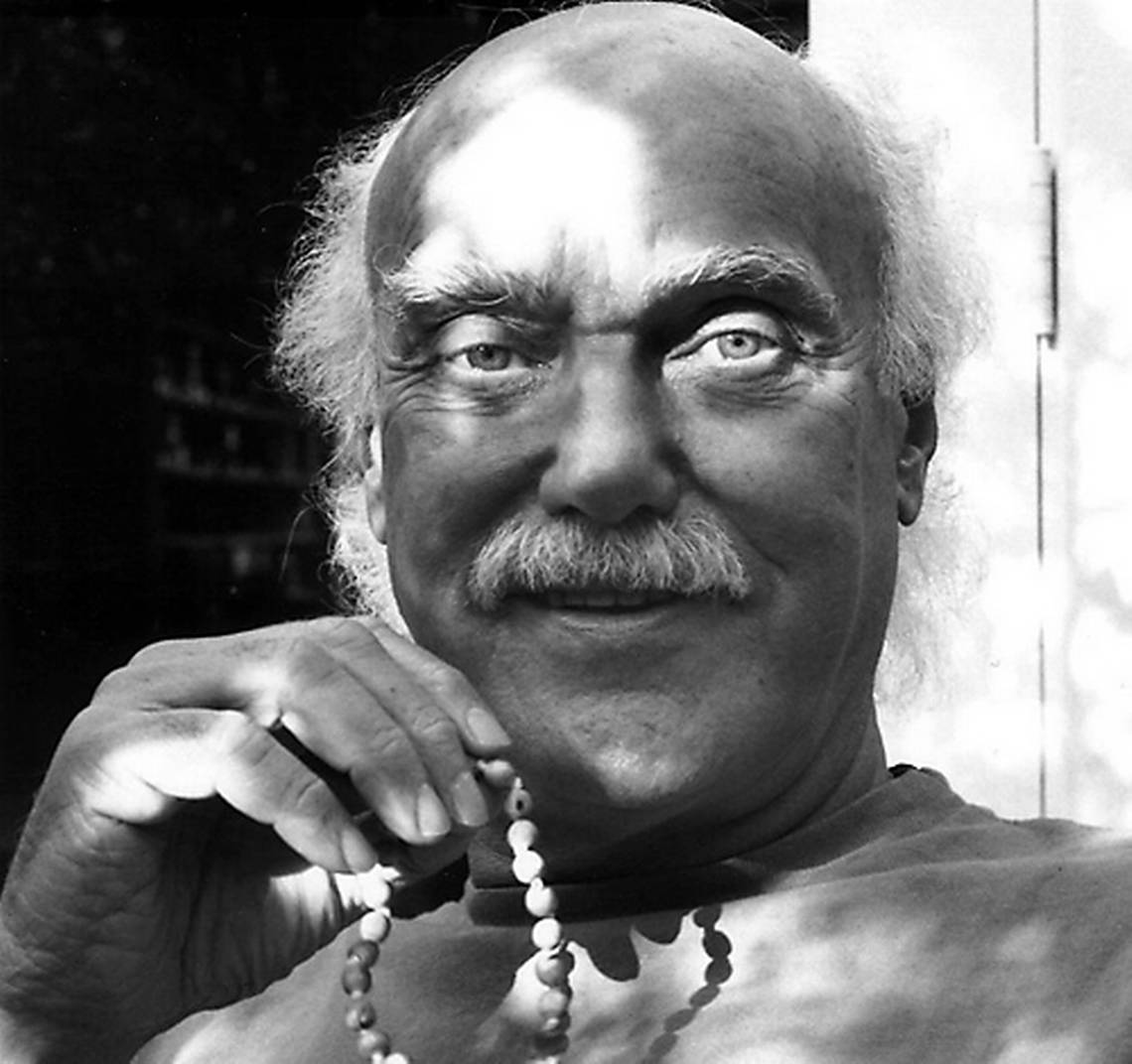
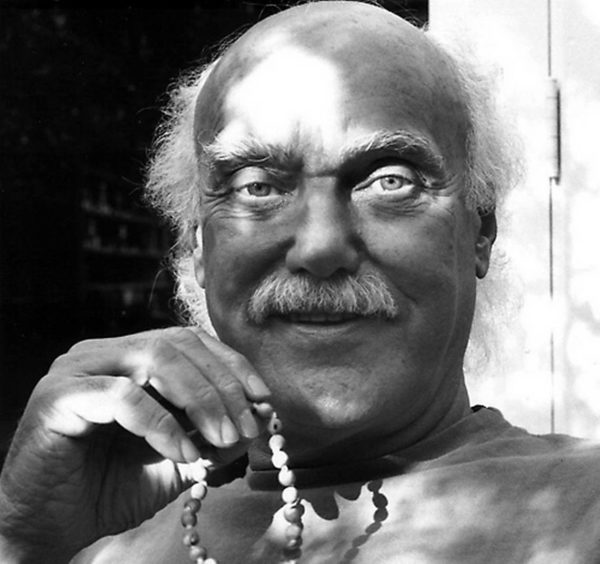
Portrait of Ram Dass taken by the late Mark Thompson
Baba Ram Dass, aka Richard Alpert, the gay author of the important New Age bible “Be Here Now,” died on Sunday at his home on Maui, Hawaii. He was 88, the New York Times reported.
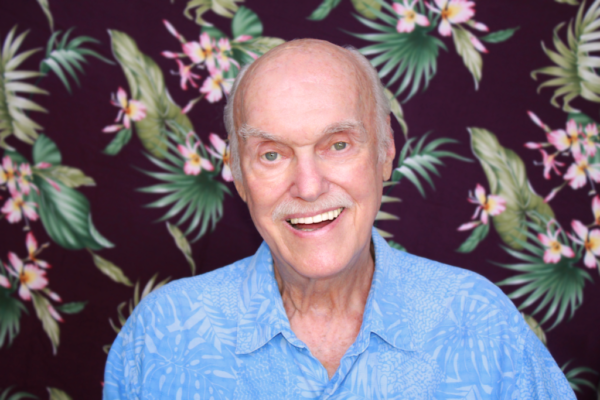
Alpert, a Ph.D teacher at Stanford, is perhaps best known for his association with Timothy Leary, whom he met teaching psychology and education at Harvard. Leary had researched the mind-altering psilocybin in some mushrooms at the University of California and continued his research at Harvard. Psychiatrists were clinically interested in psychedelic drugs such as LSD as aids for mental illnesses such as schizophrenia while the Pentagon was interested in weaponizing the hallucinogen to incapacitate the enemy.
Leary was interested in mind-expansion and, The Times reported, “invited some friends — including Mr. Alpert and the poet Allen Ginsberg — to his house in Newton, Mass., on March 5, 1961, a Saturday. In his kitchen, he distributed 10-milligram doses of psilocybin. After taking his, Mr. Alpert recalled, he felt supreme calm, then panic, then exaltation. He believed he had met his own soul. He said he realized then that ‘it was O.K. to be me.’”
Two years later, in May 1963, Leary and Alpert were fired — Alpert for giving drugs to an undergraduate and Leary for abandoning his classes, per The Times. The two subsequently moved into a 64-room mansion on a 2,500-acre, provided by Gulf Oil heiress Peggy Mellon Hitchcock, a volunteer LSD research subject, which became a psychedelic commune.
But tensions surface between Leary and Alpert over the latter’s expressed bisexuality.
From the New York Times:
“Mr. Leary accused Mr. Alpert of trying to seduce his 15-year-old son, Jack, whom Mr. Alpert often took care of while Mr. Leary, a single parent, traveled.
“Uncle Dick is evil,” Mr. Leary told Jack, according to [Don Lattin’s book “The Harvard Psychedelic Club: How Timothy Leary, Ram Dass, Huston Smith and Andrew Weil Killed the Fifties and Ushered in a New Age for America.”]
“Oh, come on, Dad,” Jack replied. “Uncle Dick may be a jerk, but he’s not evil.””
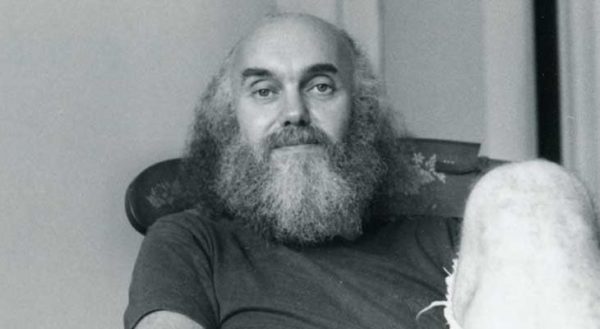
In 1967, Alpert left for India where he met Neem Karoli Baba, known as Maharajji to his followers. A spiritual encounter resulted in Alpert taking Maharajji as his guru and Maharajji dubbing Alpert “Ram Dass,” which means servant of God. Dass also was gifted with the prefix “Baba,” which respectfully means “father.”
Maharajji sent Ram Dass home in 1968, where he subsequently moved into a cabin on a New Hampshire estate owned by his father. Hundreds of people showed up to follow him and he soon went on tour, espousing wisdom such as: “Treat everyone you meet like God in drag.” he said in one talk.
In 1971, Ram Dass published “Be Here Now,” a reflection on his own personal journey and a “how-to” on how to create a spiritual life: “Cookbook for a Sacred Life: A Manual for Conscious Being.” It was the must-read book for the countercultural movement and New Age aspirants. The rest of his life was devoted to helping people, especially shifting the fear of dying into a spiritual journey.
Ram Dass also continued to evolve, shaving his guru beard in the 1980s, and conceding that his “400 LSD trips had not been nearly as enlightening as his drugless spiritual epiphanies,” The Times reported, though he took a drug trip or two once a year “for old time’s sake.”
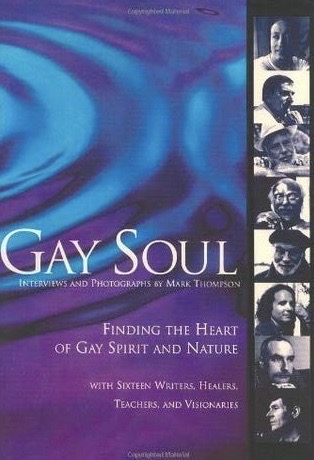
Ram Dass officially came out the 1990s. Here’s an excerpt from his interview (hat tip to The Bach Book) with the late Mark Thompson, former editor at The Advocate and author of several books, including the 1995 anthology Gay Soul: Finding the Heart of Gay Spirit and Nature.Thompson also photographed a portrait of Ram Dass, which he took on tour with other notable souls.
From Mark Thompson:
“If eyes are the windows to one’s soul, then Ram Dass’ are shatterproof. At first, they are all you notice, suspended in space, lambent and unflinching, a world unto themselves, until slowly the surrounding features assemble. It’s like watching a portrait by a sidewalk artist take shape: first the eyes, and then, in a few deft strokes, the rest of the face is drawn.
The face itself is generous and kind, inset with permanent lines of amusement. But it’s the liquescent, penetrating gaze of the man that so clearly impresses, momentarily jolting me out of superficial pleasantry. We finish our handshake, and I renew my introduction. Ram Dass nods jovially. I try to feel reassured despite my nervousness.
It’s this quality of being stripped so clean, so zero to the bone—a vast but potent emptiness that Ram Dass reveals with one effortless look—that leaves me unnerved. I’ve come to his front door armed with questions and theories, a lifetime of assumptions left intact. With uncanny ability, he absorbs my projections and hands them back to me. The interviewer, in the end, must answer to himself.
I’ve long considered Ram Dass a wise gay elder, a conferral that comes as a surprise not only to Ram Dass but to others as well. While the author, speaker, and spiritual activist has made no attempt to hide his homosexual past — it is discussed at random, usually in passing, among the pages of his seven books — the fact that he is gay is not commonly known. And while he counts among his followers many who are gay, he has left little imprint on the gay community itself.
“Gay sexual autobiography,” he quietly muses to himself after we’ve settled down to talk. We’re sitting in a high-ceilinged room that has one wall covered with shelves holding hundreds of tapes of his lectures. A bowl of figs and other fruit sits on a small table between us. He continues to reflect while fingering his mala beads; the raucous laughter of children in a nearby schoolyard fills the silence. It’s almost as if he’s flipping through the various tapes in his head containing past life experience. Finally, he looks up smiling. “It’s interesting,” says Ram Dass. “I’ve never been interviewed about this topic, so this is fun for me.”
I’m surprised to hear this but, of course, allow its truth. After all, much of Ram Dass’ life for the past thirty years has been about unloading the weight of personal history, chucking away and burning in the bright, pure flame of spiritual enlightenment all that is not needed. Sexual identity has undoubtedly been part of that consumed baggage. Judging from the spartan, business-like trappings of his home Ram Dass seems to need or want very little these days other than the opportunity to perform compassionate service in the world.
When asked anything about his personal life, he casually mentions a longtime male relationship: “We’ve had a very close and dear friendship for fifteen years,” he says. “We don ’t define it, and its extremely satisfying to me as a fellow human being.
….
The human fate of suffering — on both the physical and spiritual planes – is the one universal condition that Ram Dass seems most apt to address. Suffering is “grist for the mill” (to borrow the title of his classic 1977 work), the propellant of conscious awakening if one only employs it as such. Sexual needs of whatever persuasion and material wants, such as fame and fortune, are fueled by the personality-possessed “me” part of our minds. Desire creates suffering and keeps our innermost selves from finding life’s ultimate fulfillment: the state of being at one with God. Given this quintessential Eastern view of life, I can understand Ram Dass’ objections to labeling people based on their sexual predilections. Gay or straight—what’s the difference if we are meant to transcend attachment?
Still, as appealing as this philosophy may sound, we live in a Western world deeply entrenched in its prejudices and roles, a you-are-what-you-own attitude. Modern gay identity has been spun out of those elements, but some of us cling to the belief that there remains an inexplicable mystery about our being that exists far beneath the constructed surfaces. According to Ram Dass, the answer lies in examining the clinging itself.
….
In Compassion in Action you freely relate past homosexual experiences, something you have not often done. Have you been uncomfortable in talking about being gay? When did you first know?
I had a late latency, and not until I was fifteen years old did I start to really become sexually awakened. Up until then I hadn’t differentiated, I had no labels; I was just so floored by sex. By the time I was seventeen, I started to have relations with boys and realized I enjoyed that. But it was still within the category of teenage folly. You see, I grew up at a time when homosexuality was far deeper in the closet than it is now. I became engaged to be married when I was in college in Boston, but then I started to go out cruising. I’d picked up people or get into sexual encounters with men in parks and bathrooms. So I was confused. Later, when I moved to California to do postgraduate work at Stanford, I started to get more involved in gay life in San Francisco. I’ve only roughly estimated, sometimes to just blow people’s minds, but I’m sure I’ve had thousands of sexual encounters. It was often two a night. Then I returned east to be a professor at Harvard and continued to have this incredible sexual activity. But I always had a woman as a front to go to faculty dinners and things like that.
As many did, and continue to do, you were leading a double life.
My life was completely duplicitous for thirty years. I had an apartment and would have guys in overnight, but I didn’t live with anybody and didn’t make any real liaisons. I gained a reputation at the health service for how sensitive I was to people with gay problems. The psychiatrists kept referring all the homosexual cases to me, but they had no conception of who I really was. This was 1958 until 1963, the year I got thrown out of Harvard.
That’s a famous incident. What really happened?
Tim Leary and I and a lot of friends had one of these big community houses. We got into a situation where Harvard started to get so freaked about the drugs we were using that they asked us to stop doing our research using any undergraduates. We could use graduate students, or outside populace, but we couldn’t use undergraduates because it was too risky. But I had all these relationships with young men whom I really wanted to turn on with. And it had nothing to do with our research; it was my personal life, so I went ahead. It turned out there was another student who was very jealous of this, an editor of the campus newspaper, and he created a huge expose.
So it was gay eros and not LSD that got you thrown out of Harvard.
It was a combination of all those things. In a way, LSD had given me the license to be what I am. It looked at me inside and out and said what you are is okay. And that gave me a license to start to say I didn’t want to hide anymore. The American Association of University Professors wanted to defend me, but I realized that that would just be such a mess–the hell with it! I wasn’t interested in going back to Harvard anyway; I was too far on the drugs. I wanted to go on that trip much, much more.
Most gay men, particularly of that time, have had to deal with overwhelming emotions of guilt and shame. How did you cope with your feelings of internalized homophobia?
The guilt was toward all sex in life. There was no differentiation because nobody even thought about homosexuality in my upbringing. So after that, I didn’t feel called upon to define myself in any way at all. I mean, why define myself? I can fill many roles in life. So I didn’t join “being gay,” I didn’t become a clubbie within the gay community–I just wasn’t drawn to it. Instead, I became very involved in consciousness and spiritual work.
There was a moment when there were four of us making this pilgrimage around southern India in a Volkswagen microbus. One of the fellows in the car was an extremely attractive young man, and one night he and I ended up having a sexual affair together. The next day we sat down in front of my guru, whom I knew knew everything, even though I’d never discussed this kind of thing with him. He looked at me and he looked at this guy, and then he said to me, “You’re giving him your best teaching,” I thought, OK, if you say so. I’ll buy that. But then he said we shouldn’t have any more sex and we didn’t.
There was a long period which I really saw my homosexuality as deeply pathological. I was growing up in the zeitgeist of Western psychology. I had been trained as a Freudian therapist in the analytical institute—and that’s the way it looked. Men and women were made to go together; and everything else seemed like something had gotten fucked up somewhere along the way. I saw my mother as a prime contender of that because she had taken my power. She was such a deep love for me. The reason my puberty was so late was because I kept trying to stay a child to stay in intimate relationship with her. It was clear that if I became a man, she’d reject me. And so I got fatter and fatter, eating everything. she gave me as my form of intimacy with her. At one point in prep school, where I was horny all the time, I hugged her and got an erection. She pushed me away and said there’s milk and cookies downstairs.
This is a more common dynamic between gay men and their moms than would be supposed.
Oh, I understand! So, I ended up having a hard time in my relations with women, in getting my own pleasure. The women that I ended up having sex with were women who were quite aggressive, who really demanded it of me. I mean, they were just scratchers and yellers. I got to the point where I would take huge amounts of acid and look at these slide pictures of women to try to see where my fear was because I saw that there was a block where I just turned off women.
As you were growing up, what was your relationship with your father like?
I was sort of an appreciator of him. He was a very successful and upwardly mobile person, so he didn’t have too much time for the family. He was a somewhat remote figure. When he was around, we did a lot of things together but I never felt he heard me.
In Compassion in Action you state: “As the result of being a Jew, I felt that I had been imbued with three things: first, the sense that behind and within the multiplicity of forms there is One, seamless and radiant, and that loving that One, with all my being, is a path. Second, a love and respect for knowledge as a path to wisdom. And the third great gift I felt I had received was an awareness of suffering and the compassion that arises with that awareness.” I’d like to know how being gay has also shaped your spiritual journey. What gifts have been endowed to you from that?
As a result of being caught with another fellow in prep school, I was completely ostracized – nobody would speak to me for about a year. I’d walk into a room and all the kids would stop speaking. I couldn’t tell my parents, so it cast me way back inside myself; it drove me inward.
That deepened, first of all, the quality of my compassion toward other human beings who are ostracized. But I also think it served me in good stead later on when I started experimenting with psychedelics. I have always felt like I was an outsider.
The added burden was that I had small genitals, and in this society that is a major crime. I was ostracized a lot for that, too. I was laughed at, and I’m sure it affected my behavior a great deal because it was the double whammy of not only being gay but having this feeling of deficiency. But–after I had done a lot of deep work with psychedelics, genital sexuality wasn’t a dominant issue. The areas of my gratification had shifted. It didn’t matter to me that much.
….
Rather than discuss ideas and theories let’s talk about something that is very real in the lives of gay men–the issue of being wounded. I have talked with hundreds of gay men over the years, and not one has escaped being ostracized, or being called a “sissy” or a “faggot, ” or having some other kind of deeply wounding experience.
I would say that’s true. But being “wounded” refers to the personality–not to the soul. I’d say I’ve been deeply wounded in my personality. Absolutely, deeply wounded. And I don’t think I’ve ever gotten over it. I still feel wounded by it. I still feel unwelcome in this culture. Because I live among so many straight populations, I’ve started to talk more about being bisexual, being involved with men as well as women. Most of the audiences with whom I do that are people who already love me so much they couldn’t care if I turned into a frog. Allen Ginsberg, who’s an old friend, goes and confronts people with his gayness. I don’t see any reason to do that—it’s not my trip. I never deny it, but I don’t push it because it’s not part of my active identity.
You’ve been more open in recent years. Why the candor now?
I trust myself more. Before, the candor would have been a bid to try to seduce people, to get young men to come near me. Like as an initiation or something like that—come up and see my holy pictures! I don’t think I trusted myself because I think my desires were so strong.
….
Like many gay men, I’ve been caught up in thinking about death alot these days because of AIDS. But that aside, it seems to me there’s still an enormous amount of suffering around being gay in such an intensely homophobic culture.
I think there is, too. But for gay men, the work is to work on their own minds. They may be doing social protest, or be part of the Radical Faeries, or whatever, but let them do it from a place where they understand that it’s all work on themselves. Because as long as their minds are the way they are, they’re going to keep suffering. Ostracism and the judgment of the culture feed on very deep inadequacies in the individual that they’re still clinging to in the mind, and these judgments play upon them. They resonate with those thoughts that are not quite excoriated, extirpated, expiated.
Do you think gay men have a special role to play in society today, a role that would encompass special aptitudes for compassion, empathy, and insight? And, if you do, then what is your advice for actualizing that potential in the world?
When you read the obituaries, you become aware that an extraordinarily disproportionate amount of beauty brought into the culture was created by gay people. But how to interpret that? I would be hard-pressed to say that those qualities aren’t available in everybody, but the cultural roles everybody found themselves in made it easier for gay men to express themselves in this way. It’s like, the Jews became moneylenders because they weren’t allowed to do anything else. People who have identified either androgynously or in a way not as male in the cultural sense of maleness have accessible to them qualities of creativity and sensitivity and appreciation that they would be well to capitalize upon and use. You’ve got to stand back far enough to see the stages of transformation in a culture. If you watch the women’s movement, for instance, you see it go through many stages: from a kind of militant, male identification in which women want what the man has, to then finding themselves having lost something that they wanted because they were so busy getting something else, until finally you start to see women who are not imitating outward strength but are really developing inner strength as beings. At that point, they’re more willing to accept differences and celebrate them rather than to deny them.
….
There are many spiritual seekers to be found within the gay community, of course.
Oh, many. The predicament is that the deeper your spiritual practice, the more you are aware that everybody is androgynous. That’s why when you say “gay soul” there’s something in me that grabs, since I don’t think of souls as either male or female. I think souls have karma that determines the way they manifest, gay or straight, female or male. But I don’t think souls themselves have any sexual identity at all.
I agree that AIDS has opened a lot of hearts and minds. Still, gay men have built a culture based largely on desire–the commercialization of sex and physical attractiveness. The gay sensibility is very Dionysian. So how do we learn to strike a new balance Is pursuit of sexual fulfillment really antithetical to spiritual enlightenment? Can both exist harmoniously?
There’s a sequence: You grow up very invested in the physical and the psychological. Then you feel the finiteness of those things. And then you awaken through some process only to realize you’ve been trapped. After that, there’s a tendency to go into a kind of renunciative fervor to get into the place where you feel at one with the universe and spirit. That often creates what are called horny celibates—it’s a certain kind of rejection of the physical/psychological plane.
But in a still later stage you realize that the aversion is keeping you from being free—and you want to be free, not just high. So you start to come back into who you are, passionate and nonattached. You are fully in life, joyfully participating — sex is a celebration. It’s all wonderful, and at the same moment, it’s all empty. That’s a very evolved stage of spiritual maturation. I don’t find the gay community as a group very spiritually ripe or eager to go beyond. I think they’re too caught up enjoying the power and the desire systems. In some ways it feels like a certain kind of hell realm to me because it’s not going to be enough.
How do we move out of that? How can being gay be used as “grist for the mill” of inner development?
Only when you have gone through your rebellion against the culture for cutting you out of the juice, then getting the juice, having what you want, and seeing that that is just another state. Once you get a partner, a bed without hiding, and freedom to walk down the street holding hands, then what are you going to do? But you can’t shortcut the process. If somebody wants a Cadillac, you can’t say, “Don’t have it,” because they’ll be busy not having the Cadillac, and they’re not gonna get free. They’ll be somebody without a Cadillac.
One of the deepest issues plaguing gay men is inner-directed hate. People can go out and march in gay pride parades all they want, but that still doesn’t mean they’ve dealt with low self-esteem or their own internalized homophobia.
There are corrupting psychological correlates to being gay in our society—I’m not necessarily saying of being gay, but of being gay in our society. There’s tremendous frustration, self-hatred, and fear that’s rooted in power issues—a good coating of masochism. Those things color the way a movement proceeds. You can make those things into icons to be worshipped. I mean, there’s a lot of masochism expressed in the gay community. There are clubs for it.
….
In your own life, what fears and areas of resistance are you particularly aware of right now?
Gee, that’s tricky. There are some bizarre ones, like trying to be at peace with the emptiness of it all. I would say trying to continually let go of models about existence into the richness of the moment. I still cling to somebody doing something, going somewhere. But I don’t cling very much to it. I can see this correlated with gayness at some level. I have a tremendous perfectionistic streak in me about myself. And because I don’t live up to it, I have a tremendous judgment of others as being not perfect enough. I find that a very unappealing quality, and I have to work with it. I’m horrified by my imperfections because I so want to be free. But I think that’s a cop-out. I’m very fierce, at times, and the fierceness isn’t coming necessarily out of love; it’s coming out of judgment, out of my own pain.
How does your perfectionism correlate with your being gay?
That perfectionistic quality is very deep in many gay people I know. I think it comes from unworthiness and inadequacy, a sense of wanting to be perfect so that you can be loved enough. If I do something perfectly, I can love myself. I get the gold star. And that’s hard when you’re a human: you just can’t do things perfectly enough.
You know, this conversation has brought to the surface in me a lot of uncooked stuff that I haven’t fully integrated into my being—things I’ve just put into little compartments in my head.
Like what, for instance?
Different stages of life, different attitudes toward the gay community. Talking about these issues with someone who has given them as much thought as you gives me something to work on. I mean, what have I got to learn here? What have I got to learn about my own prejudices? I just took a course last year on hidden racism from a Latino man who was showing me my own oppression, my own subtle racism. I’m probably imprinted so deeply from my generation that I don’t know if I will ever get out of thinking that gayness is a pathology. Even though I’m delighted that other people don’t, and I would like not to, it’s so deep in me.
I experience being gay as a wonderful blessing, an opportunity—anything but a pathology. But I’ve come of age during a different time than you. I’m making my assumptions with a different set of cultural references in hand. People who have defined themselves as gay are at a point in their collective journey where they don’t need to throw the definition away, but rather keep evolving it.
I would say that if gay people who read this are willing to really sit down and examine their own minds in a systematic way, they may experience the freedom to take more delight in life and in their gay expression of it. And they will see that who they are isn’t gay, and it’s not not-gay, and it’s not anything—it’s just awareness. I really challenge them to make that exploration on their own before they write the script of their lives in stone too much. Because if they have picked up a book that’s called Gay Soul, they’re asking for it. And if they’re asking for it, they should be able to get it. Somebody should say, “Look, don’t get trapped in that. Get on with it.” There’s no need to label yourself at all.”
Minnesota
Reports say woman killed by ICE was part of LGBTQ community
Renee Nicole Good shot in Minneapolis on Wednesday

A U.S. Immigration and Customs Enforcement agent shot and killed a woman in Minneapolis as she attempted to drive away from law enforcement during a protest on Wednesday.
The Star Tribune newspaper identified the victim as Renee Nicole Good, 37, a Minneapolis resident who lived blocks from where she was shot in the Central neighborhood, according to reports. Donna Ganger, Good’s mother, told the Star Tribune that her daughter lived in the Twin Cities with her wife.
Multiple videos of the shooting have gone viral on social media, showing various angles of the fatal incident — including footage that shows Good getting into her car and attempting to drive away from law enforcement officers, who had their weapons drawn.
In the videos, ICE agents can be heard telling Good to “get out of the fucking car” as they attempted to arrest her. Good, who press reports say was married to a woman, ended up crashing her car into an electric pole and other vehicles. She was later transported from the scene of the shooting and died at the hospital.
President Donald Trump defended the ICE agent on Truth Social, saying the officer was “viciously” run over — a claim that coincides with Homeland Security Secretary Kristi Noem’s assessment of the situation. Noem, a South Dakota Republican, insisted the officer “fired defensive shots” at Good after she attempted to run over law enforcement agents “in an attempt to kill them — an act of domestic terrorism.”
Multiple state and local officials disputed claims that the shooting was carried out in self-defense at the same time Noem was making those assertions.
An Instagram account that appears to belong to Good describes her as a “poet and writer and wife and mom and shitty guitar strummer from Colorado; experiencing Minneapolis, MN,” accompanied by a rainbow flag emoji.
A video posted to X after the shooting shows a woman, reportedly her wife, sitting on the ground, crying and saying, “They killed my wife. I don’t know what to do.”
“We’ve dreaded this moment since the early stages of this ICE presence in Minneapolis,” Mayor Jacob Frey said during a Wednesday press conference. “Having seen the video myself, I want to tell everybody directly that [the DHS’s claim of self-defense] is bullshit. This was an agent recklessly using power that resulted in somebody dying, getting killed.”
“I have a message for ICE. To ICE, get the fuck out of Minneapolis,” Frey continued. “We do not want you here. Your stated reason for being in this city is to create some kind of safety, and you are doing exactly the opposite. People are being hurt. Families are being ripped apart. Long-term Minneapolis residents that have contributed so greatly to our city, to our culture, to our economy are being terrorized, and now somebody is dead. That’s on you, and it’s also on you to leave.”
Across the Capitol, members of the House and the Senate condemned the actions of the officer.
“There’s no indication she’s a protester, there’s nothing that at least you can see on the video, and therefore nothing that the officers on the ground could see that identify her as someone who’s set out to try to do harm to an ICE officer,” U.S. Sen. Elizabeth Warren (D-Mass.) said Wednesday night on MS NOW’s “The Weeknight.”
“There is no evidence that has been presented to justify this killing,” House Minority Leader Hakeem Jeffries (D-N.Y.) said in a statement on his website. “The masked ICE agent who pulled the trigger should be criminally investigated to the full extent of the law for acting with depraved indifference to human life.”
“ICE just killed someone in Minneapolis,” U.S. Rep. Robert Garcia (D-Calif.) the highest-ranking Democrat on the House Oversight Committee, posted on X. “This administration’s violence against communities across our country is horrific and dangerous. Oversight Democrats are demanding answers on what happened today. We need an investigation immediately.”
In a statement to the Advocate, Human Rights Campaign President Kelley Robinson wrote, “Today, a woman was senselessly killed in Minneapolis during an ICE action — a brutal reminder that this agency and the Trump regime put every community at risk, spreading fear instead of safety. Reports that she may have been part of the LGBTQ+ community underscore how often the most vulnerable pay the highest price.”
National LGBTQ Task Force President Kierra Johnson also responded to Good’s death.
“We recognize and mourn the loss of Renee Nicole Good and extend our condolences to her family, loved ones, and community,” said Johnson in a statement. “This loss of life was preventable and reprehensible, particularly coming at the hands of federal agents.”
National
Top 10 LGBTQ national news stories of 2025
Trump, Supreme Court mount cruel attacks against trans community
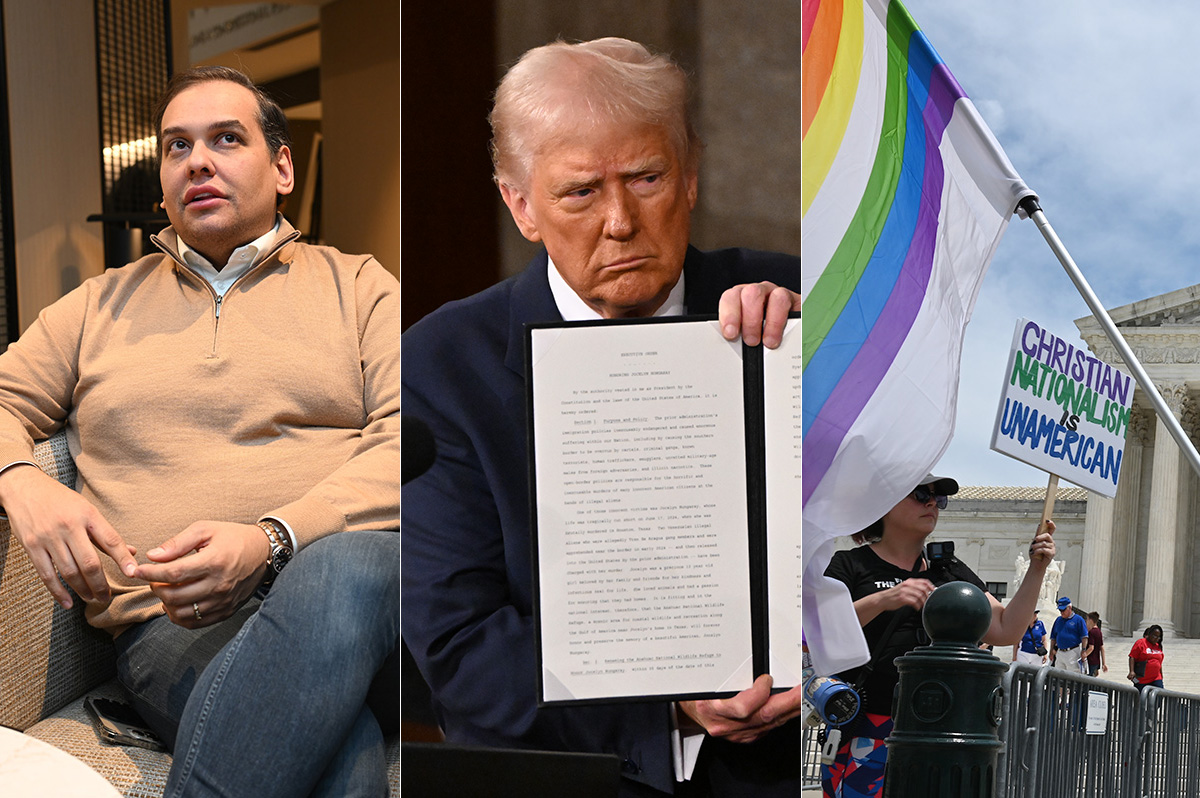
President Trump’s anti-LGBTQ agenda dominated national news in 2025, particularly his cruel attacks on trans Americans. Here are our picks for the top 10 LGBTQ news stories the Blade covered in 2025.
10. Trump grants clemency to George Santos
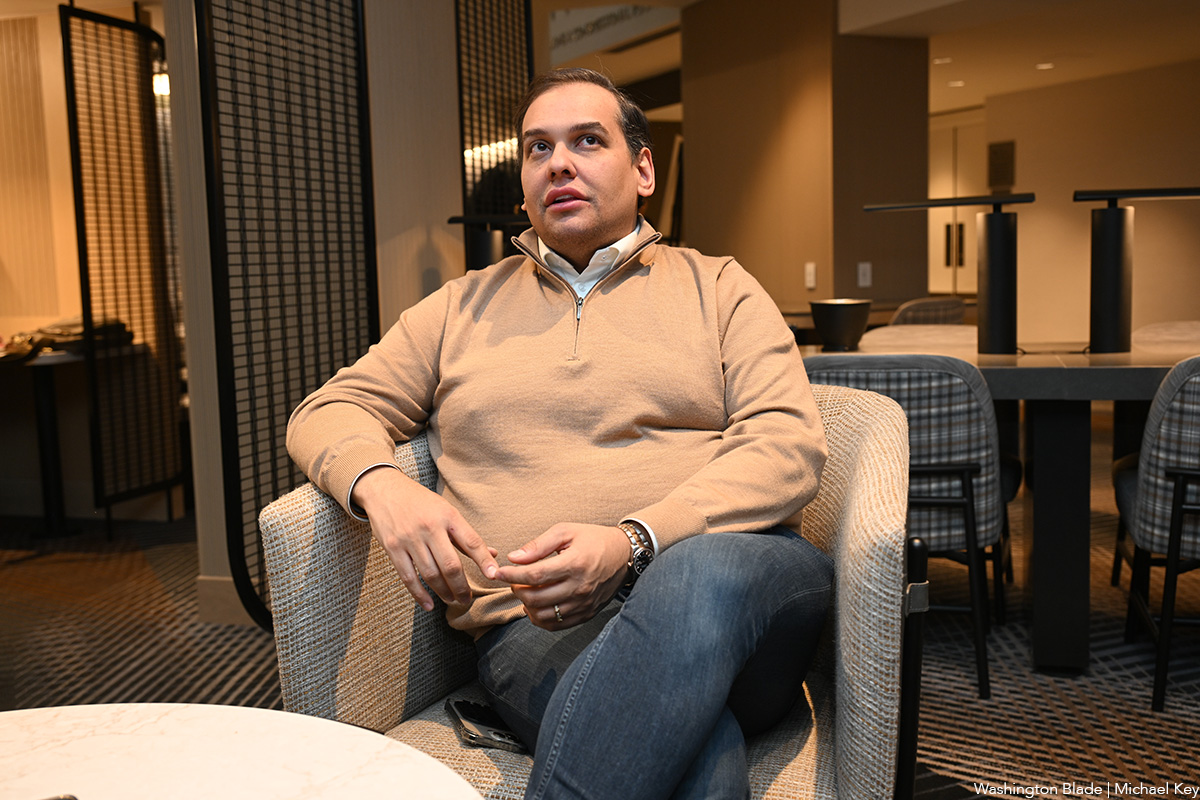
President Donald Trump granted clemency to disgraced former Long Island Rep. George Santos. Santos was sentenced to 87 months in federal prison after pleading guilty to wire fraud and aggravated identity theft and had served just 84 days of his more than seven-year sentence. He lied to both the DOJ and the House Ethics Committee, including about his work and education history, and committed campaign finance fraud.
9. U.S. Olympics bans trans women athletes
The United States Supreme Court decided in 2025 to take up two cases — Little v. Hecox and West Virginia v. B.P.J.— both of which concern the rights of transgender athletes to participate on sports teams. The cases challenge state laws under the Equal Protection Clause of the 14th Amendment, which prevents states from offering separate boys’ and girls’ sports teams based on biological sex determined at birth. Both cases are set to be heard in January 2026. The developments follow a decision by the United States Olympic & Paralympic Committee to change eligibility rules to prohibit transgender women from competing in women’s sporting events on behalf of the United States, following Trump’s Executive Order 14201, “Keeping Men Out of Women’s Sports.”
8. FDA approves new twice-yearly HIV prevention drug
The U.S. Food and Drug Administration on June 18 approved a newly developed HIV/AIDS prevention drug that needs to be taken only twice a year, with one injection every six months. The new drug, lenacapavir, is being sold under the brand name Yeztugo by pharmaceutical company Gilead Sciences. According to trial data, 99.9 percent of participants who received Yeztugo remained HIV negative. This emerging technology comes amid direct cuts to HIV/AIDS research measures by the Trump–Vance administration, particularly targeting international HIV efforts such as PEPFAR.
7. LGBTQ people ‘erased’ from gov’t reports
Politico reported in March that the Trump–Vance administration is slashing the State Department’s annual human rights report, cutting sections related to the rights of women, people with disabilities, the LGBTQ+ community, and more. Members of Congress objected to the removal of the subsection on “Acts of Violence, Criminalization, and Other Abuses Based on Sexual Orientation, Gender Identity or Expression, or Sex Characteristics (SOGIESC)” from the State Department’s Annual Country Reports on Human Rights Practices.
In a Sept. 9 letter to Secretary of State Marco Rubio, U.S. Reps. Robert Garcia (D-Calif.), Julie Johnson (D-Texas), and Sarah McBride (D-Del.) urged the department to restore the information or ensure it is integrated throughout each report, noting that the reports serve as key evidence for asylum seekers, attorneys, judges, and advocates assessing human rights conditions and protection claims worldwide.
6. Trump admin redefines ‘sex’ in all HHS programs
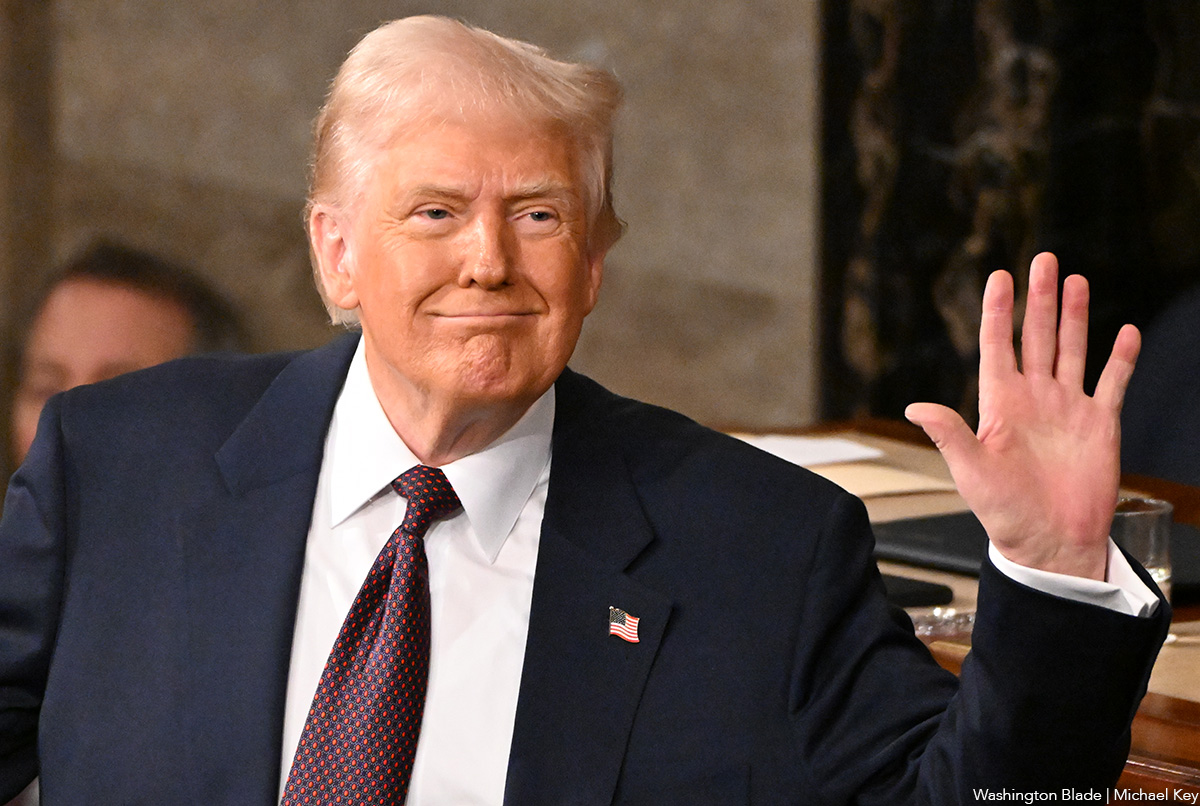
The Trump administration canceled more than $800 million in research into the health of sexual and gender minority groups. More than half of the National Institutes of Health grants scrapped through early May involved studies of cancers and viruses that disproportionately affect LGBTQ people.
The administration is also pushing to end gender-affirming care for transgender youth, according to a new proposal from the Department of Health and Human Services, NPR reported. The administration is considering blocking all Medicaid and Medicare funding for services at hospitals that provide pediatric gender-affirming care. “These rules would be a significant escalation in the Trump administration’s attack on access to transgender health care,” said Katie Keith, director of the Center for Health Policy and Law at Georgetown University.
5. FBI plans to label trans people as ‘violent extremists’
The Human Rights Campaign, Transgender Law Center, Equality Federation, GLAAD, PFLAG, and the Southern Poverty Law Center condemned reports that the FBI, in coordination with the Heritage Foundation, may be working to designate transgender people as “violent extremists.” The concerns followed a report earlier this month by independent journalist Ken Klippenstein, who cited two anonymous national security officials saying the FBI is considering treating transgender subjects as a subset of a new threat category.
That classification—originally created under the Biden administration as “Anti-Authority and Anti-Government Violent Extremists” (AGAAVE) — was first applied to Jan. 6 rioters and other right-wing extremists. Advocates said the proposal appears to stem from the false claim that the assassination of Charlie Kirk was committed by a transgender person.
4. Pentagon targets LGBTQ service members
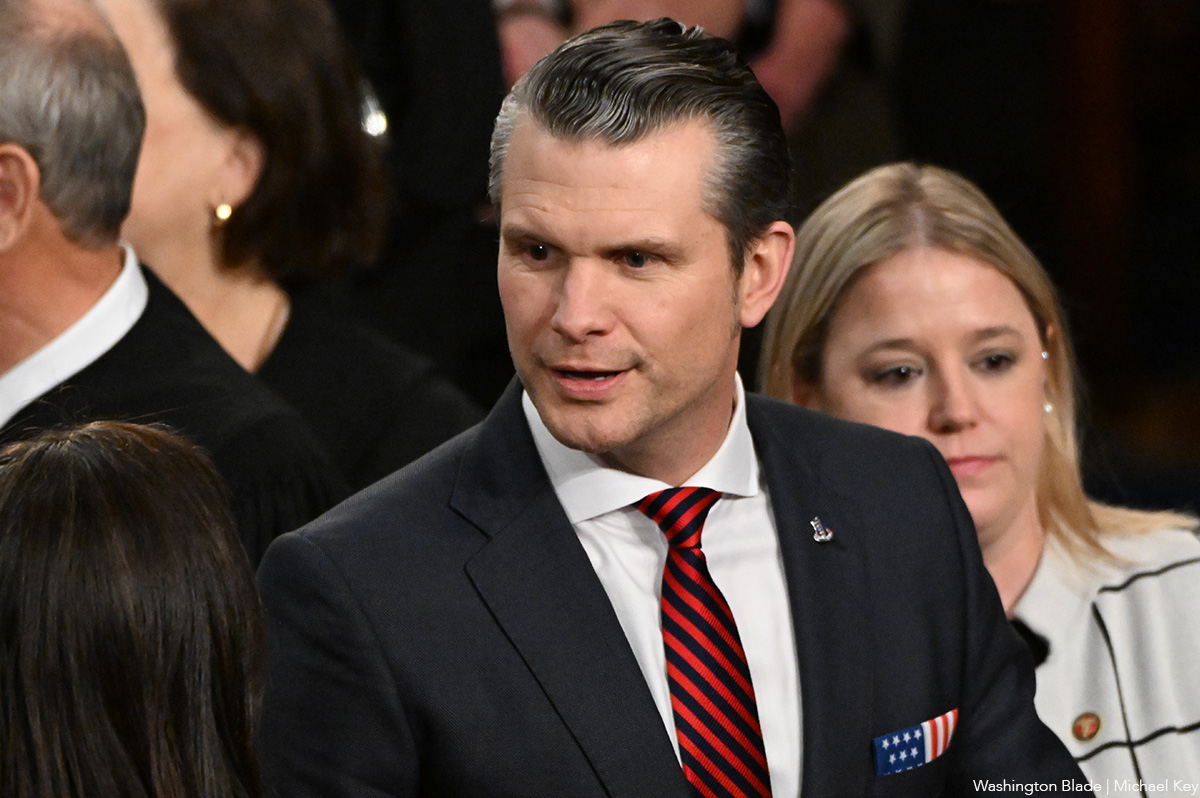
Acting in agreement with the growing anti-LGBTQ sentiment from the Trump administration, during a televised speech to U.S. military leaders at Marine Corps Base Quantico in late September, Defense Secretary Pete Hegseth denounced past military leadership for being too “woke,” citing DEI initiatives and LGBTQ inclusion within the Department of Defense. During the 45-minute address, Hegseth criticized inclusive policies and announced forthcoming directives, saying they would ensure combat requirements “return to the highest male standard only.”
Since 2016, a Navy replenishment oiler had borne the name of gay rights icon Harvey Milk, who served in the Navy during the Korean War and was separated from service under other than honorable conditions due to his sexuality before later becoming one of the first openly LGBTQ candidates elected to public office. In June 2025, the ship was renamed USNS Oscar V. Peterson.
The U.S. Air Force also announced that transgender service members who have served between 15 and 18 years would be denied early retirement and instead separated from the military without benefits. Transgender troops will be given the option of accepting a lump-sum payout offered to junior service members or being removed from service.
In February, the Pentagon said it would draft and submit procedures to identify transgender service members and begin discharging them from the military within 30 days.
3. Trump blames Democrats, trans people for gov’t shutdown
Republicans failed to reach an agreement with Democrats and blamed them for the government shutdown, while Democrats pointed to Republicans for cutting health care tax credits, a move they said would result in millions of people paying significantly higher monthly insurance premiums next year. In the White House press briefing room, a video of Democrats discussing past government shutdowns played on a loop as the president continued to blame the Democratic Party and “woke” issues, including transgender people.
“A lot of good can come from shutdowns. We can get rid of a lot of things. They’d be Democrat things,” Trump said the night before the shutdown. “They want open borders. Men playing in women’s sports. They want transgender for everybody.”
2. Supreme Court joins attacks on LGBTQ Americans
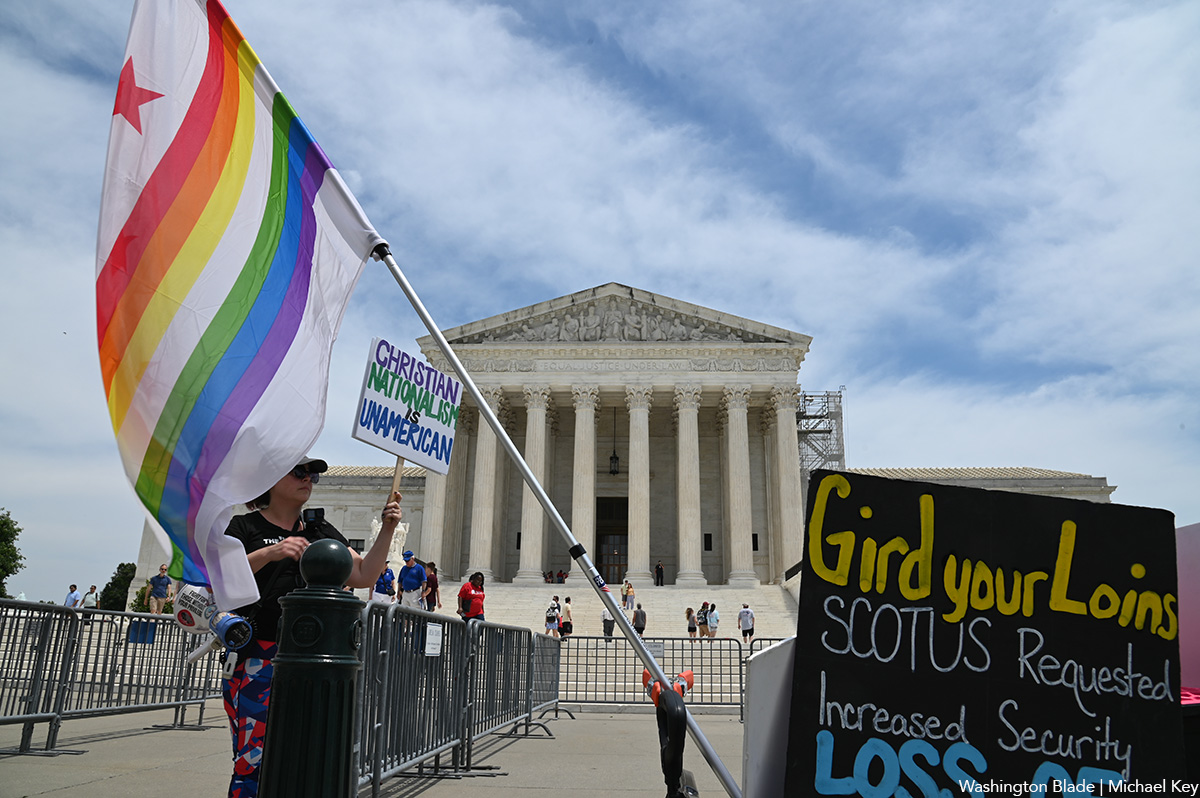
The U.S. Supreme Court issued multiple rulings this year affecting LGBTQ people. In Mahmoud v. Taylor (6–3), it ruled that public schools must give parents advance notice and the option to opt children out of lessons on gender or sexuality that conflict with their religious beliefs. The case arose after Montgomery County, Md., schools added LGBTQ-inclusive storybooks to the elementary curriculum.
In June, the court upheld Tennessee’s ban on gender-affirming care for transgender minors, protecting similar laws in more than 20 states. Lawmakers and advocates criticized the ruling, and a coalition of seven medical associations warned it strips families of the right to direct their own health care.
The Court also allowed the Trump administration to enforce a ban on transgender military personnel and to implement a policy blocking passports with “X” gender markers, with the federal government recognizing only male and female designations.
1. Trump inaugurated for second time
President Donald Trump became the 47th president after winning Wisconsin, securing 277 of the 270 electoral votes needed. His guidebook, Project 2025, outlined the Republican Party’s goals under his new leadership, with a particular focus on opposing transgender rights.
Trump nominated openly gay hedge fund executive Scott Bessent as U.S. Treasury Secretary, a role he eventually assumed. Bessent became the highest-ranking openly gay U.S. government official in American history.
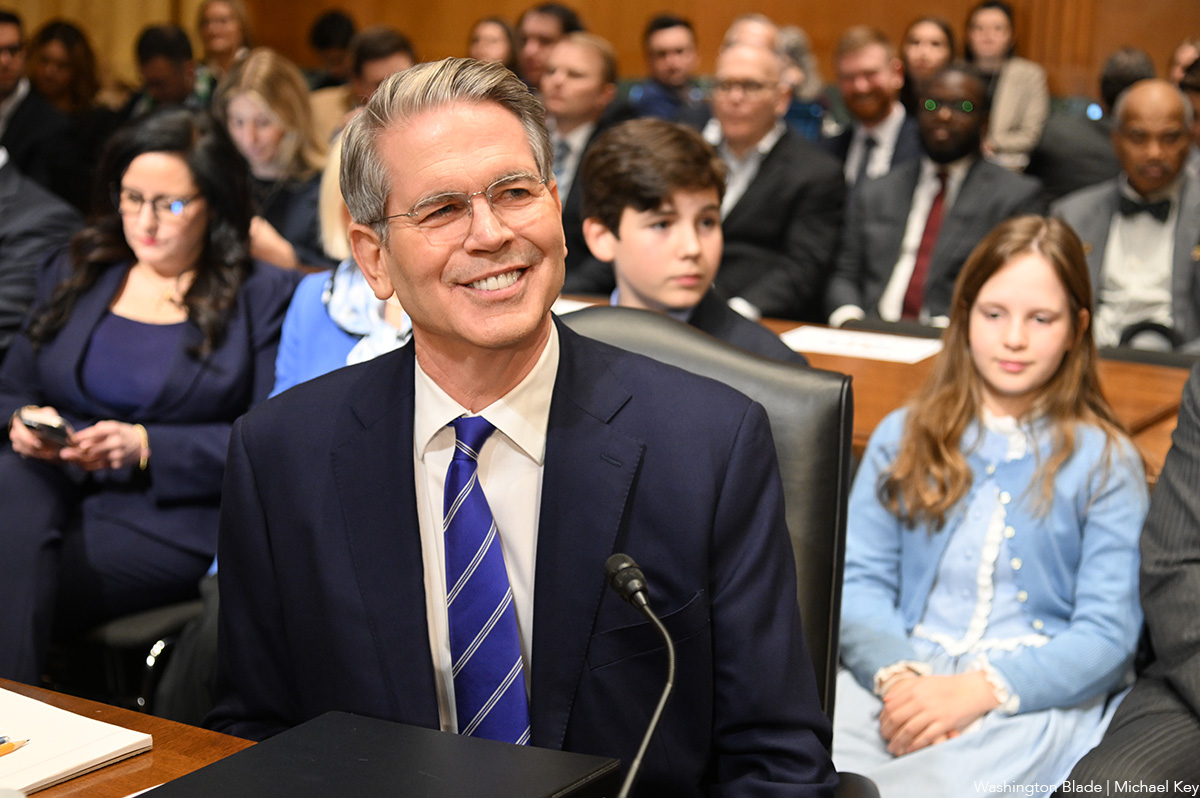
Honorable mention: The war on rainbow crosswalks escalates around the country
Florida Gov. Ron DeSantis (R) ordered state transportation officials to remove a rainbow-colored crosswalk in Orlando next to the Pulse gay nightclub, where 49 mostly LGBTQ people were killed in a 2016 mass shooting. The move follows a July 1, 2025, announcement by U.S. Transportation Secretary Sean Duffy that, with support from President Trump, the department adopted a “nationwide roadway safety initiative” that political observers say could be used to require cities and states to remove rainbow street crosswalks.
Crime & Justice
San Fernando Valley LGBTQ+ community center Somos Familia Valle is trying to rebuild from a “traumatizing” break-in
This Monday, burglars stole $8,000 worth of essential materials from the organization.

In the early hours of Monday morning, burglars broke through three walls of the Sun Valley LGBTQ+ community center Somos Familia Valle. They rummaged through two main rooms and left with $8,000 worth of technology: 15 Chromebooks, two iPads, a camera, two microphones, and a large audio system that staff members used to host programs like Queer Yoga and Vogue Classes. “I was scared because I was wondering if it was a hate thing,” said Somos Familia Valle co-founder and president Kevin Al Perez.
Perez had woken that day with his usual routine of checking the building’s cameras and Wi-Fi systems remotely. Suddenly, he jolted after noticing they’d been turned off for hours. Since he was away, he asked his father to check on the space. “Everything’s fine,” his father replied, who said that the main door looked untouched.
After stepping inside, the damage became clear. Pieces of walls were torn out and strewn across the floor, items were hastily tossed aside, and the technology normally utilized for the center’s phone banking program, fitness classes, and community workshops were missing. “This is our first space,” Perez told the Blade, noting how devastating this break-in has been, both physically and mentally, for himself and his community members.
Somos Familia Valle began as a grassroots movement in 2014, when Perez and other LGBTQ+ locals noticed the absence of a Pride parade in the San Fernando Valley. Together, they organized a vibrant, joyous celebration of queer identity, planting the roots of what is now an intersectional space that uplifts and pours into the Valley’s diverse residents. For nearly a decade, they hosted programs at other community spaces, such as the Sherman Oaks East Valley Adult Center, before moving into their brick-and-mortar location on Sheldon Street.
With this physical space, Perez and Somos Familia Valle’s community organizer, Damiana Cano, have evolved that core mission with new branches. It is important for them to not only prioritize queer education and empowerment but also voter engagement mobilization, know your rights workshops, computer literacy classes, and physical health programs to fuel the safety and strength of people who seek support from the center.
“As someone who was born and raised in this community, I think it is so fulfilling and beautiful that LGBTQ people of all generations have a safe space to come together and create beautiful art here in the Northeast SFV,” Cano wrote to the Blade. “Over time, this…became more than a community; these people are my family.”
In response to the break-in, the community has stepped up. Perez opened a GoFundMe campaign, and within three days, it has surpassed its initial $8,000 goal. Right after the break-in, the center halted all programming. Now, with this wave of support, Perez says that these offerings, which include a TGI support group, mental health task force, Pride committee, and Queer Country will likely resume in January.
Somos Familia Valle will also move forward with their upcoming “Queer Together” holiday party, which will be held at their center on Sheldon Street. Perez told the Blade that the walls have been repaired, and he is determined to honor the resilience of the center and the people it serves. “It’s heartbreaking and traumatizing [but] they’re not going to take that away from us,” Perez said.
The break-in is currently under investigation by local law enforcement agents. To support Somos Familia Valle, their GoFundMe campaign is linked here.
Kristie Song is a California Local News Fellow placed with the Los Angeles Blade. The California Local News Fellowship is a state-funded initiative to support and strengthen local news reporting. Learn more about it at fellowships.journalism.berkeley.edu/cafellows.
National
As house Democrats release Epstein photos, Garcia continues to demand DOJ transparency
Blade this week sat down with gay House Oversight Committee ranking member
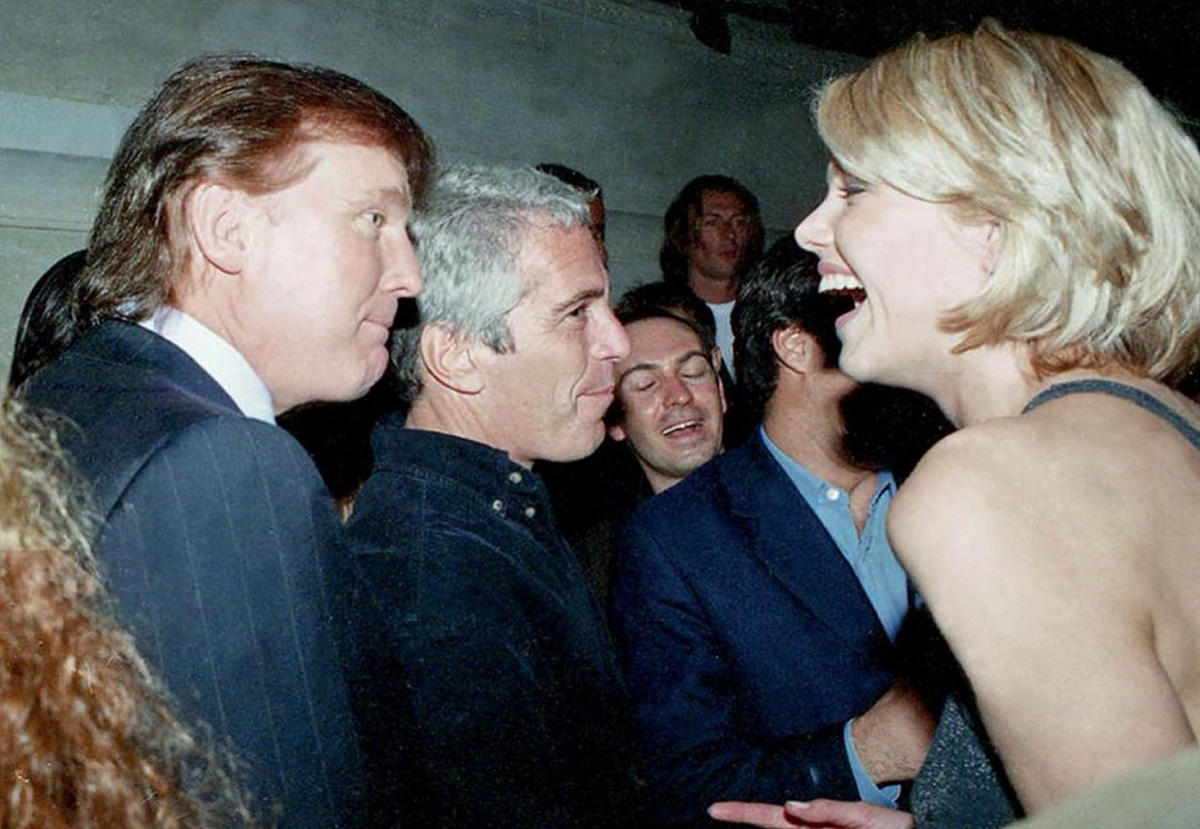
Democrats on the House Oversight Committee have released new photos from Jeffrey Epstein’s email and computer records, including images highlighting the relationship between President Donald Trump and the convicted sex offender.
Epstein, a wealthy financier, was found guilty of procuring a child for prostitution and sex trafficking, serving a 13-month prison sentence in 2008. At the time of his death in prison under mysterious circumstances, he was facing charges of sex trafficking and conspiracy to traffic minors.
Among those pictured in Epstein’s digital files are Trump, former President Bill Clinton, former Trump adviser Steve Bannon, actor and director Woody Allen, economist Larry Summers, lawyer Alan Dershowitz, entrepreneurs Richard Branson and Bill Gates, and Andrew Mountbatten-Windsor.
One photo shows Trump alongside Epstein and a woman at a Victoria’s Secret party in New York in 1997. American media outlets have published the image, while Getty Images identified the woman as model Ingrid Seynhaeve.
Oversight Committee Democrats are reviewing the full set of photos and plan to release additional images to the public in the coming days and weeks, emphasizing their commitment to protecting survivors’ identities.
With just a week left for the Justice Department to publish all files related to Epstein following the passage of the Epstein Files Transparency Act, which requires the Justice Department to release most records connected to Epstein investigations, the Washington Blade sat down with U.S. Rep. Robert Garcia (D-Calif.), the ranking member on the Oversight Committee to discuss the current push the release of more documents.
Garcia highlighted the committee’s commitment to transparency and accountability.
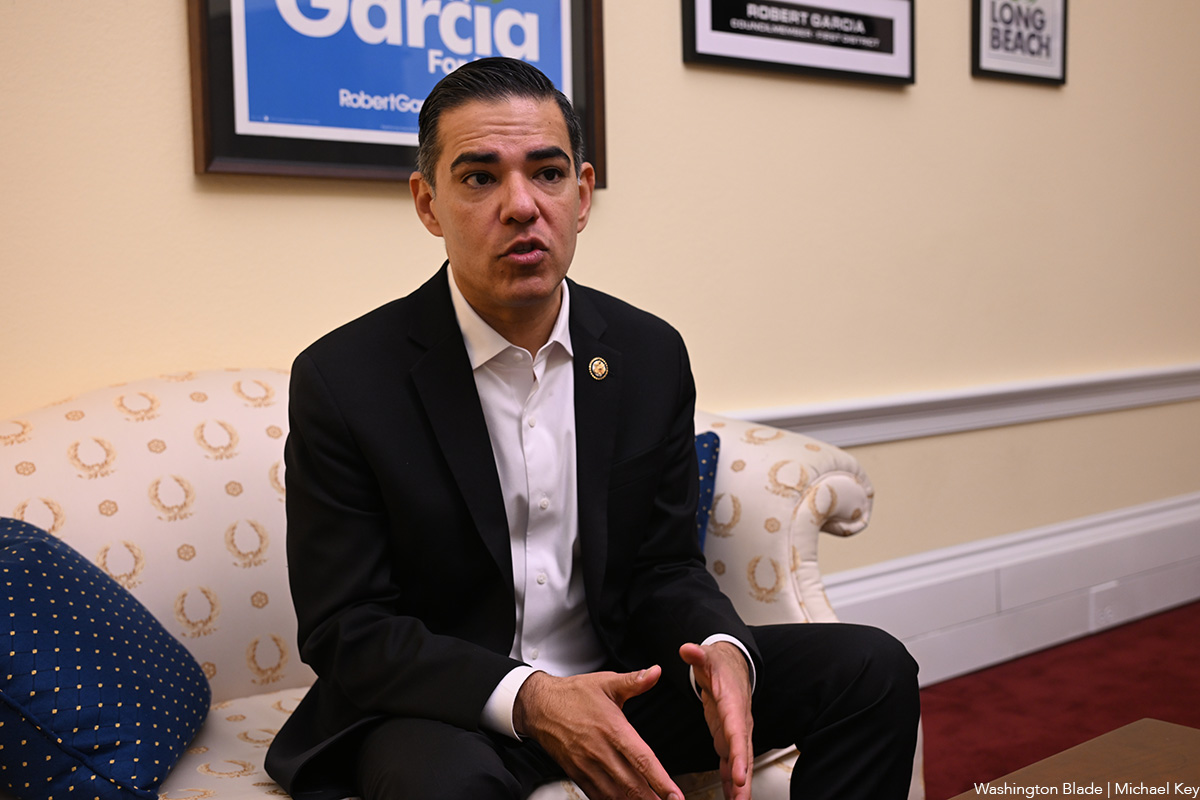
“We’ve said anything that we get we’re going to put out. We don’t care who is in the files … if you’ve harmed women and girls, then we’ve got to hold you accountable.”
He noted ongoing questions surrounding Trump’s relationship with Epstein, given their long history and the apparent break in friendship once Trump assumed public office.
“There’s been a lot of questions about … Donald Trump and Jeffrey Epstein. They were best friends for 10 years … met women there and girls.”
Prior to Trump’s presidency, it was widely reported that the two were friends who visited each other’s properties regularly. Additional reporting shows they socialized frequently throughout the 1990s and early 2000s, attending parties at Trump’s Mar-a-Lago resort in Florida and Epstein’s residences. Flight logs from an associate’s trial indicate Trump flew on Epstein’s private jet multiple times, and Epstein claimed Trump first had sex with his future wife, Melania Knauss, aboard the jet.
“We’ve provided evidence … [that leads to] questions about what the relationship was like between Donald Trump and Jeffrey Epstein.”
Garcia stressed the need for answers regarding the White House’s role in withholding information, questioning the sudden change in attitude toward releasing the files given Trump’s campaign promises.
“Why is the White House trying to cover this up? So if he’s not covering for himself … he’s covering up for his rich friends,” Garcia said. “Why the cover up? Who are you hiding for? I think that’s the question.”
He confirmed that Trump is definitively in the Epstein files, though the extent remains unknown, but will be uncovered soon.
“We know that Trump’s in them. Yeah, he’s been told. We know that Trump’s in them in some way. As far as the extent of it … we don’t know.”
Garcia emphasized accountability for all powerful figures implicated, regardless of financial status, political party, or personal connections.
“All these powerful men that are walking around right now … after abusing, in some cases, 14‑ and 15‑year‑old girls, they have to be held accountable,” he said. “There has to be justice for those survivors and the American public deserves the truth about who was involved in that.”
He added that while he is the ranking member, he will ensure the oversight committee will use all available political tools, including subpoenas — potentially even for the president.
“We want to subpoena anyone that we can … everyone’s kind of on the table.”
He also emphasized accountability for all powerful figures implicated, regardless of financial status, political party, or relationship with the president.
“For me, they’re about justice and doing the right thing,” Garcia said. “This is about women who … were girls and children when they were being abused, trafficked, in some cases, raped. And these women deserve justice.”
“The survivors are strong.”
Deputy White House Press Secretary Abigail Jackson issued a statement regarding the release the photos, echoing previous comments from Republicans on the timing and framing of the photos by the Oversight Committee.
“Once again, House Democrats are selectively releasing cherry-picked photos with random redactions to try and create a false narrative,” Jackson said.
“The Democrat hoax against President Trump has been repeatedly debunked and the Trump administration has done more for Epstein’s victims than Democrats ever have by repeatedly calling for transparency, releasing thousands of pages of documents, and calling for further investigations into Epstein’s Democrat friends,”
In a press release on Friday, Garcia called for immediate DOJ action:
“It is time to end this White House cover-up and bring justice to the survivors of Jeffrey Epstein and his powerful friends. These disturbing photos raise even more questions about Epstein and his relationships with some of the most powerful men in the world. We will not rest until the American people get the truth. The Department of Justice must release all the files, NOW.”
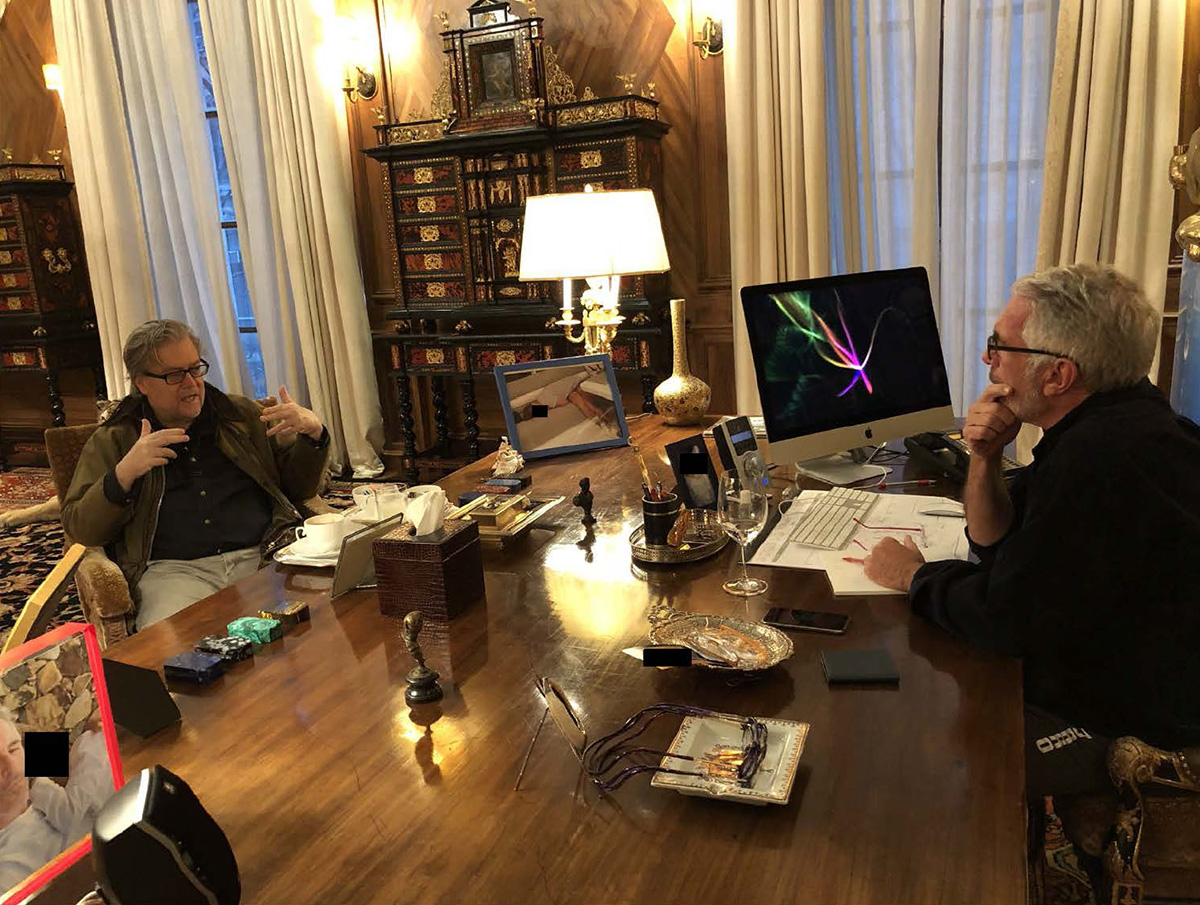
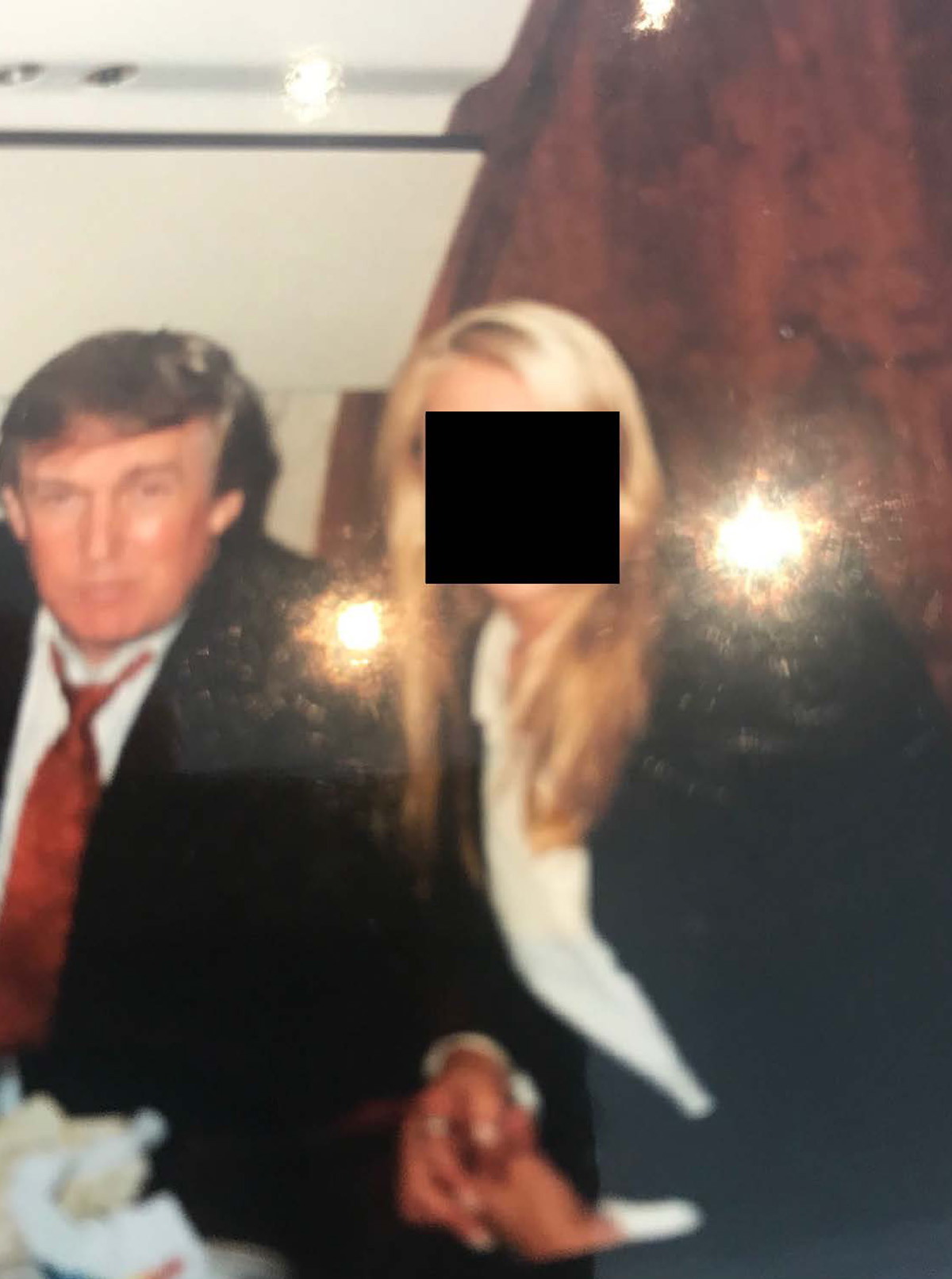
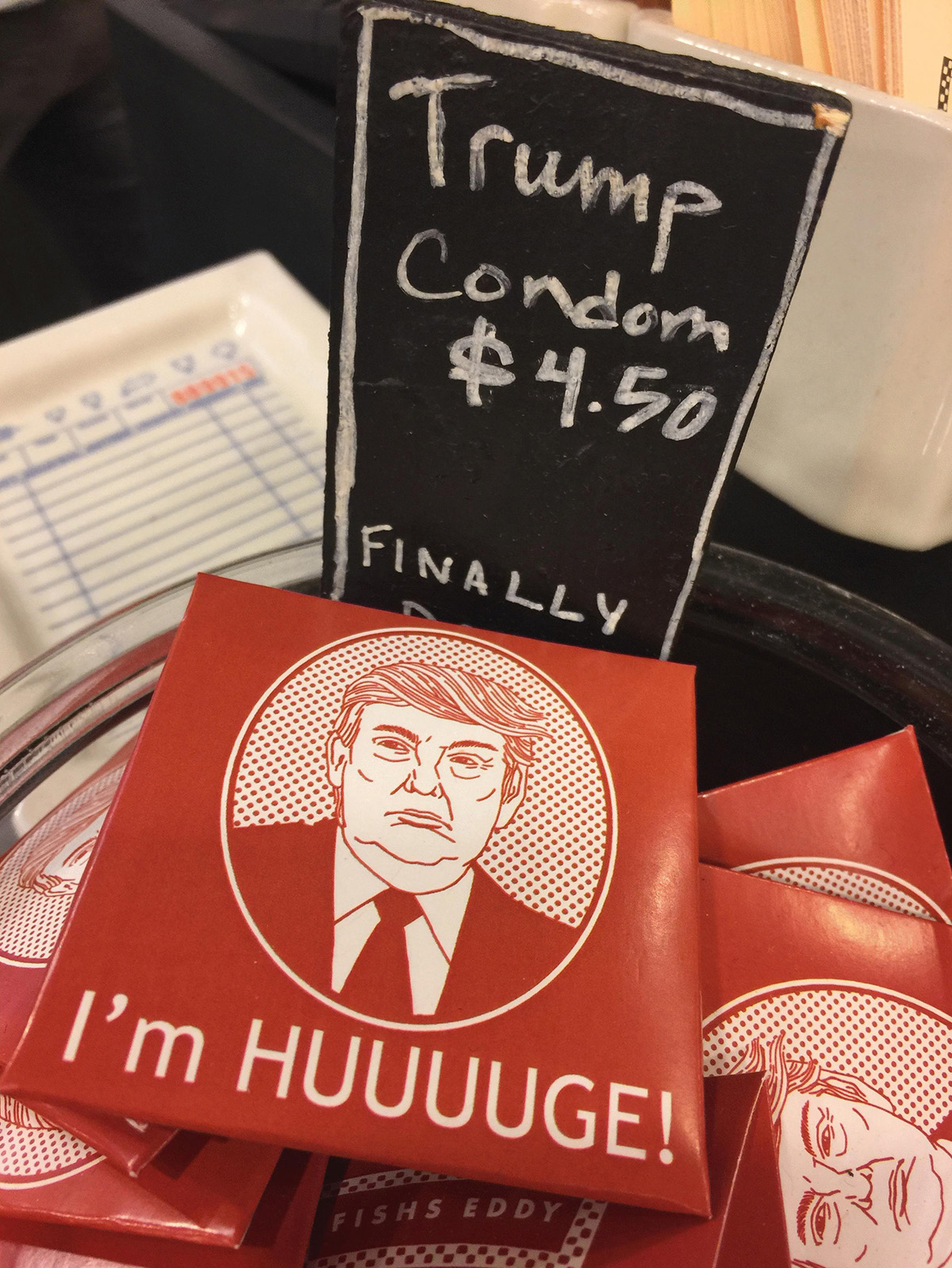
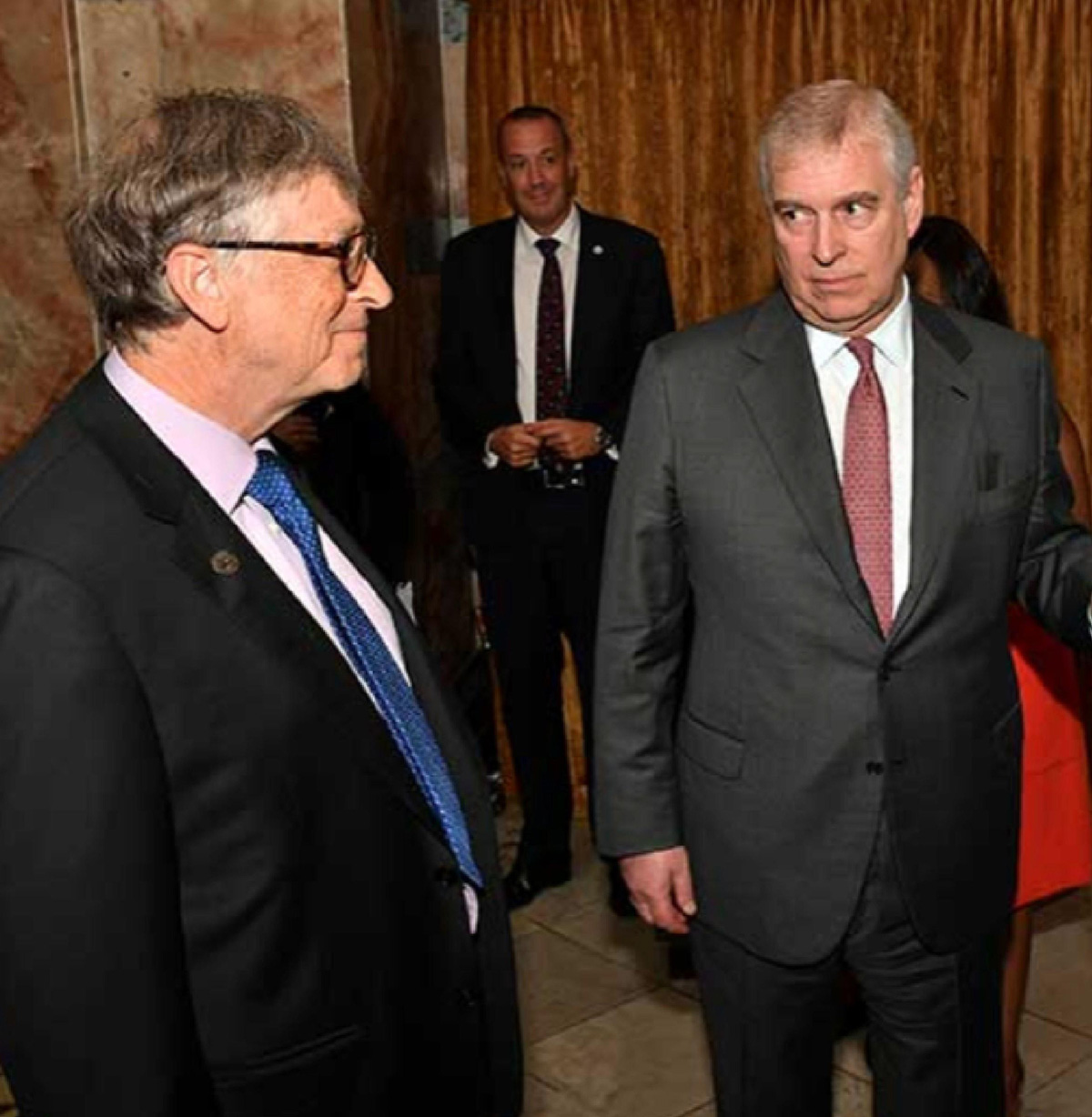
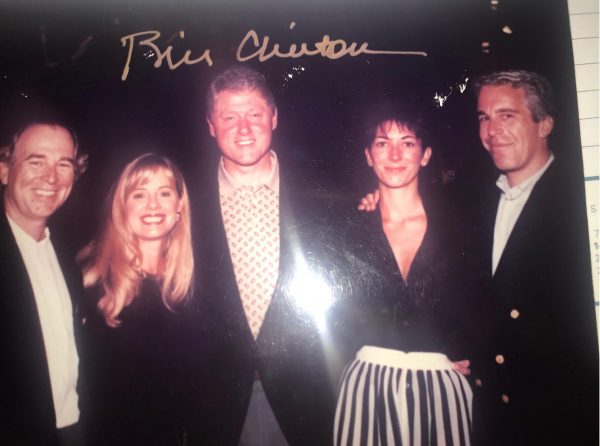
(Photo courtesy of the U.S. House Oversight Committee)
National
White House deadnames highest-ranking transgender official
Rachel Levine’s portrait altered at HHS
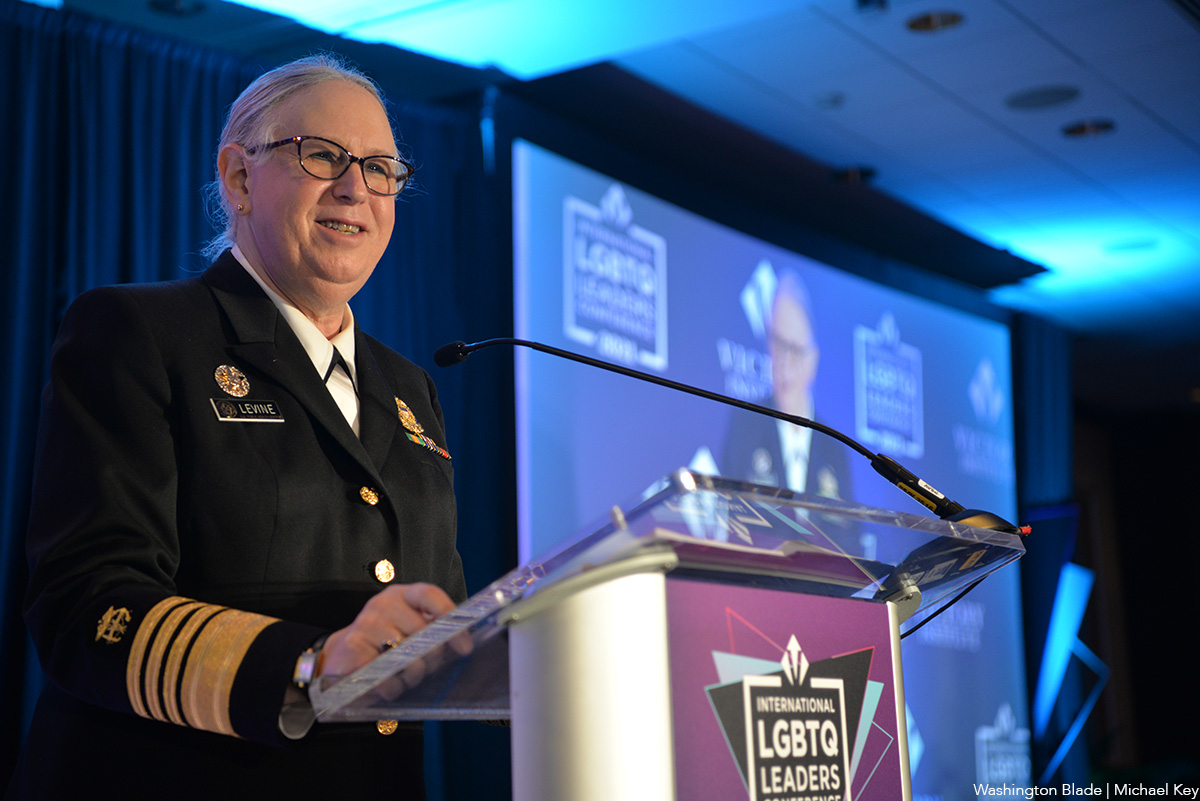
Admiral Rachel Levine — the first transgender person ever confirmed by the U.S. Senate and the highest-ranking trans official in American history — had her official portrait in the Humphrey Building altered, with staff replacing her correct name with her deadname, the name she has not used since 2011.
NPR first reported the change, and an HHS spokesperson confirmed to the outlet that Levine’s portrait had recently been altered. A digital photograph obtained by NPR shows Levine’s former (male) name typed on a placard beneath the portrait, placed under the glass of the frame.
Levine served as a four-star admiral in the U.S. Public Health Service Commissioned Corps under the Biden-Harris administration and was appointed the 17th assistant secretary for health.
During her tenure, Levine oversaw the Commissioned Corps and helped lead national public-health initiatives, including the federal COVID-19 response and vaccination strategy; efforts to address rising syphilis infection rates; HIV/AIDS prevention and treatment programs; and strategies to combat the opioid epidemic, particularly through expanded harm-reduction approaches for the communities most affected.
The Trump-Vance administration’s decision to publicly deadname Levine is widely viewed within the trans community as demeaning and disrespectful. The move comes amid a series of federal policy reversals targeting LGBTQ Americans, particularly trans youth seeking gender-affirming care.
Those actions include: weakening workplace protections for LGBTQ employees; limiting restroom access; downgrading gender-identity discrimination cases; pressuring hospitals to end gender-affirming care; cutting HIV research and prevention funding; removing LGBTQ crisis resources; restricting access to trans-inclusive medical policies for veterans and young people; supporting trans sports bans and threatening funding for teams that include trans athletes; and forcing schools and universities to eliminate DEI and LGBTQ offices, inclusive curricula, gender-neutral bathrooms, and books or training materials addressing LGBTQ issues.
The Trump–Vance administration has also expanded federal censorship by removing LGBTQ language from surveys, agency websites, Smithsonian materials, and human-rights reports; blocking Pride recognitions; creating federal communications that misgender trans women; imposing passport and travel barriers for trans Americans; lifting protections for trans service members; limiting benefits and care for LGBTQ veterans; and pressuring states, universities, and hospitals to end trans-inclusive policies under threat of losing federal research, education, or Medicaid funds. The administration has additionally deported LGBTQ asylum seekers to unsafe conditions, removed LGBTQ issues from global human-rights reporting, and escalated anti-trans rhetoric at public events.
These actions stand in stark contrast to Levine’s public-health record. As assistant secretary for health, she worked to expand LGBTQ+ health data collection, promote equitable vaccine distribution, strengthen national health-equity initiatives, and reduce care disparities experienced by historically underserved communities, including LGBTQ populations. Within HHS, she led councils and task forces dedicated to reducing structural barriers to care and improving community outcomes.
Before joining the federal government, Levine oversaw health and safety for nearly 13 million residents as Pennsylvania’s physician general from 2015–2017 and as Pennsylvania secretary of health from 2018–2021.
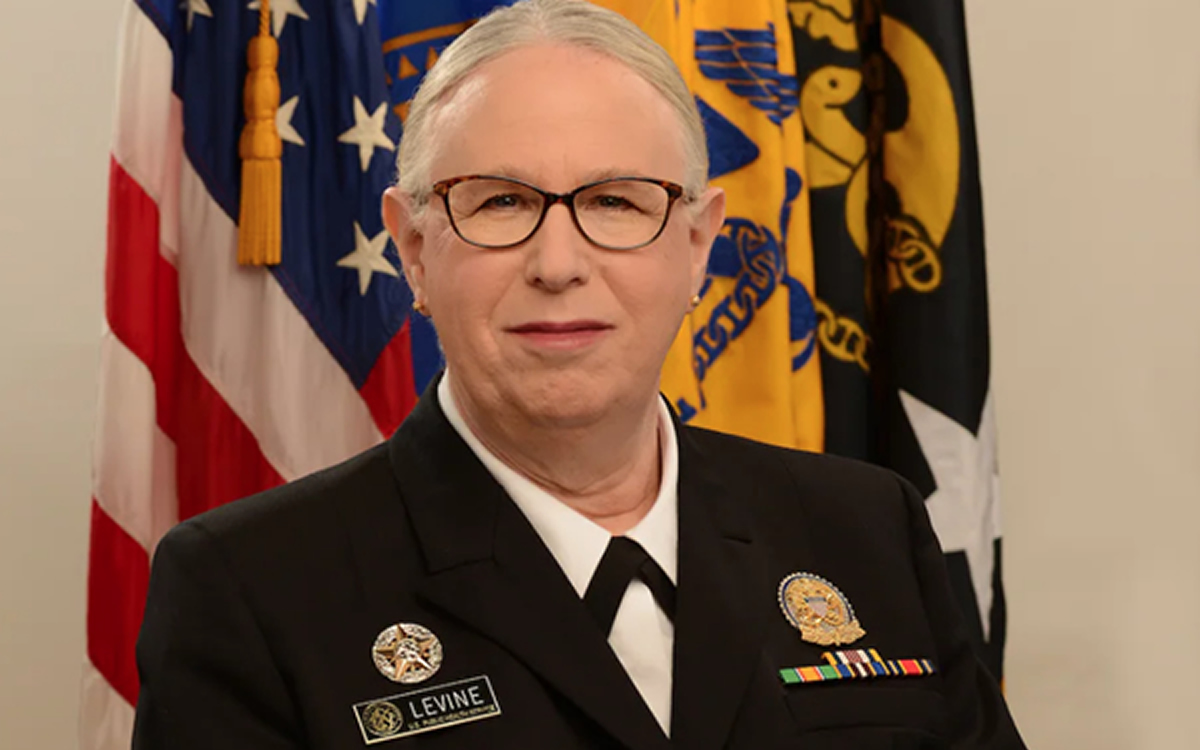
Asked by NPR about the alteration of her official portrait, Levine responded that it had been an honor to serve as assistant secretary for health, adding: “I’m not going to comment on this type of petty action.”
National
Study shows ‘pervasive mistreatment of LGBTQ people by law enforcement’
Findings claim nationwide police misconduct, including in D.C., Va., Md.

The LGBTQ supportive Williams Institute, an arm of the University of California at Los Angeles School of Law, released a report last month citing multiple research studies conducted over the past 25 years showing past and “ongoing” mistreatment of LGBTQ people by law enforcement throughout the United States.
“Findings show that LGBTQ communities – particularly LGBTQ people of color, youth, and transgender and gender nonconforming individuals – have faced profiling, entrapment, discrimination, harassment, and violence from law enforcement for decades, and this mistreatment continues to be widespread,” according to a Williams Institute statement.
“Experiences of police mistreatment may discourage LGBTQ people from reporting crimes or engaging with law enforcement,” Joshua Arrayales, the report’s lead author and Williams Institute Law Fellow said in the statement.
“Reporting crimes is essential for accurate crime statistics, property allocation of crime prevention resources, and support services that address the unique needs of LGBTQ survivors,” he said.
The 59-page report cites the findings of two dozen or more studies and surveys of LGBTQ people’s interaction with police and law agencies for the past 25 years through 2024 conducted by various organizations, including the ACLU, the National Coalition of Anti-Violence Programs, the Williams Institute, and local government agencies.
But the report does not provide a breakdown of where police abuse against LGBTQ people occurred by specific police departments or locations. Instead it provides survey research findings of large groups of LGBTQ people who responded to a survey in different locations of the U.S.
Among other things, those surveys have found “LGBTQ people are more likely than non-LGBTQ people to report being stopped by police, searched by police, arrested, and falsely accused of an offense,” the Williams Institute statement accompanying the report says. “LGBTQ people also report substantial rates of verbal harassment, physical harassment, sexual harassment, and assault,” it says.
The report itself cites surveys of LGBTQ people’s interactions with police in D.C., Baltimore, and Virginia but does not give specific cases or identify specific police departments or agencies.
“A 2022 study based on interviews with 19 Black transgender women from Baltimore and Washington, D.C. identified a theme of re-victimization while seeking help from police,” the report says. “One participant noted that male officers asked what she did to cause her own abuse,” according to the report.
“Other participants expressed that when a knowledgeable officer was present, such as an LGBTQ+ liaison, they felt more inclined to reach out for help,” it says.
The report also states, “A 2024 study based on interviews with 44 transgender people in Virginia documented two instances of transgender women being pulled over for broken tail lights and then being mistreated once officers discovered they were transgender based on their IDs.” The report does not reveal the specific location in Virginia where this took place.
Other locations the report cites data on anti-LGBTQ conduct by police include New York City, Chicago, Los Angeles, Palo Alto, Newark, N.J., and Austin and San Antonio in Texas.
The full report can be accessed at williamsinstitute.law.ucla.edu.
National
Faith leaders denounce anti-transgender attacks
‘You are holy. You are sacred. We love you.’
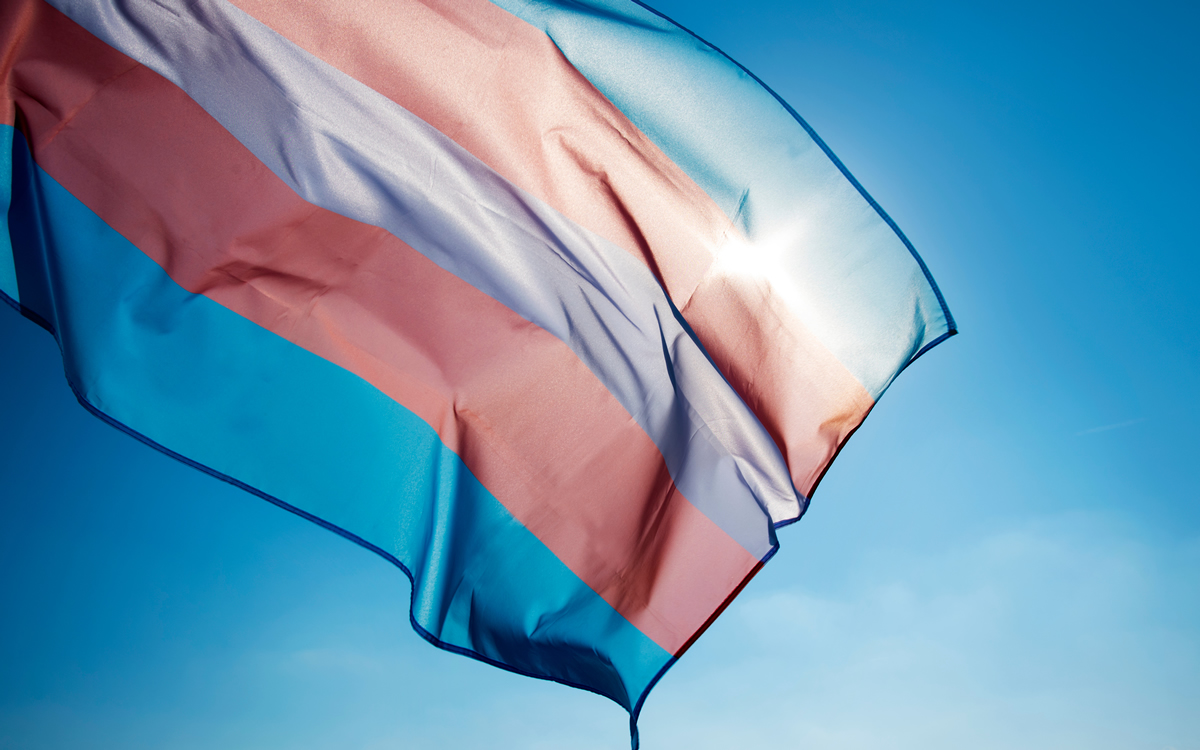
This past Trans Awareness Week, 10 heads of diverse religious traditions issued a statement proclaiming that transgender, intersex, and nonbinary people are worthy of love, support, and protection. Led by Rev. Dr. Sofía Betancourt, president of the Unitarian Universalist Association, representatives from the Universal Fellowship of Metropolitan Community Churches, The Fellowship of Affirming Ministries, the Union for Reform Judaism, the Presbyterian Church, the Christian Church (Disciples of Christ), The Episcopal Church, the United Church of Christ, and Reconstructing Judaism called out the violent and systemic persecution of trans, nonbinary, intersex, and queer people–proclaiming that their faith and their humanity urged them to affirm that trans, intersex, and quere people are “sacred” and “holy.”
Their statement comes at a critical time. Over the past three months, Trump and his Cabinet’s anti-trans rhetoric has only intensified, with a report released late September by journalist Ken Klippenstein in which national security officers leaked that the FBI is planning to classify trans people as “extremists.” By classifying trans people as “Nihilistic Violent Extremists,” far-right groups would have more “political (and media) cover,” as Abby Monteil reports for them, for anti-trans violence and legislation.
While the news is terrifying, it’s not unprecedented – the fight against trans rights and classification of trans people as violent extremists was included in Project 2025, and in the past several weeks, far-right leaders’ transphobic campaign has expanded: boycotting Netflix to pressure the platform to remove trans characters, leveraging anti-trans attack ads in the Virginia governor’s race and banning professors from acknowledging that trans people exist. In fact last month, two Republican members of Congress called for the institutionalization of trans people.
It seems that the government shutdown was predicated, at least partially, on Trump’s own anti-trans policies that were attached as riders in the appropriations bill.
It’s a dangerous escalation of transphobic violence that the Human Rights Campaign has classified as an epidemic. According to an Everytown for Gun Safety report published in 2020, the number of trans people murdered in the U.S. almost doubled between 2017 and 2021. According to data released by the Gun Safety report from February 2024, 34 percent of gun homicides of trans, nonbinary, and gender expansive people remain unsolved.
As Tori Cooper, Director of Community Engagement for the Transgender Justice Initiative for the Human Rights Campaign Foundation, this violence serves a purpose. “The hate towards transgender and gender expansive community members is fueled by disinformation, rhetoric and ideology that treats our community as political pawns ignoring the fact that we reserve the opportunity to live our lives full without fear of harm or death,” Cooper said.
The faith leaders came out in this statement to affirm that it is their spiritual and human imperative to call out this escalating violence and protect trans, nonbinary, intersex, and queer people. The leaders acknowledge that historically and today, religion is used as a weapon of hate to degrade and deny the human dignity of LGBTQ+ peoples. The Supreme Court is hearing Chiles v. Salazar, a case about the constitutionality of a Colorado ban of conversion therapy for minors, with the majority of conversion therapy practices being faith based. And despite the Supreme Court declining to hear a case challenging the constitutionality of same-sex marriage conferred in Obergefell v. Hodges, efforts to end marriage equality remain ongoing with Katy Faust’s End Obergefell movement.
“During a time when our country is placing their lives under increasingly serious threat,” the statement reads, “there is a disgraceful misconception that all people of faith do not affirm the full spectrum of gender – a great many of us do. Let it be known instead that our beloveds are created in the image of God – Holy and whole.”
The faith leaders argue that commendation of LGBTQ peoples and religiously motivated efforts to deny their dignity and rights is not the belief of all faith communities, and far-right Christian nationalist communities and others who uphold homophobia and seek to exact it writ large in the United States do not speak for all faith leaders.
This is a critical piece of the statement and builds on historical precedence. During the 1980s AIDS crisis, when far-right Christian leaders like Jerry Falwell, one of the founders of the Moral Majority, stated that HIV was “God’s punishment” for LGBTQ+ people and indicative of a broader moral decline in America, affirming faith communities came out to affirm the dignity and divinity of queer people. As funeral homes and churches refused to prepare the dead and bury them, some faith communities stepped up to say that these homophobic leaders do not speak on behalf of all people of faith.
In 1985, the United Church of Christ General Synod urged its member congregations to claim and declare themselves “Open and Affirming,” in order to express their welcome and support for LGBTQ+ people, and two years later, the Church of the Brethren issued a statement titled “A Call to Compassion” where conference members urged member congregations to speak out boldly against discrimination, provide direct care to people with HIV/AIDS, and actively educate themselves and others to stop the spread of fear and prejudice surrounding the disease.
Just one year later, the Evangelical Lutheran Church in America Church Council issued a statement, “AIDS and Church’s Ministry of Caring,” which outlined the ways in which welcoming, ministering to and advocating on behalf of people with HIV/AIDS is critical to their mission. Even the US Conference of Catholic Bishops, which earlier this month banned gender-affirming care at Catholic hospitals, issued a statement in 1987 calling discrimination against people with HIV/AIDS “unjust and immoral,” and denouncing the label of “innocent” or “guilty” patients.
Thus, the faith leaders’ statement this past week builds on a rich history of faith communities fighting the stigma that far-right faith groups perpetuate about LGBTQ+ people and committing to action. What sets this latest statement apart is its decidedly interfaith heart, which speaks to the history of the Pride Interfaith Service in Washington, DC that was first started by a group of faith leaders and lay people who gathered at the AIDS Memorial quilt.
As the statement reads, “Our scriptures vary, but they share a common conviction. As we make justice our aim we must give voice to those who are silenced. Our shared values, held across many faiths, teach us that we are all children of God and that we must cultivate a discipline of hope, especially in difficult times. As such, we raise our voices in solidarity to unequivocally proclaim the holiness of transgener, nonbinary, and intersex people, as well as the recognition of the entire spectrum of gender identity and expression.”
The statement ended by arguing that they need to call out the violence they are witnessing. Their silence, they argue, would be in compliance and reinforce the idea that homophobic religious leaders and lay people speak on behalf of all people of faith. Their statement is not only words, however, it is a written promise affirming the dignity and holiness of queer people but also to protect them in the face of increasing violence and persecution.
“When people of faith and conscience stay silent in the face of oppression, we are all made less whole. When people of faith and conscience speak out against that which violates the sacred in its own name, we have the power to stay the hand of sin. Transgender, nonbinary, and intersex people are vulnerable today,” the statement concluded.
“Our faiths, our theologies, and our practices of prophetic witness call on us to say with one voice to transgender people among us: ‘You are holy. You are sacred. We love you. We support you, and we will protect you.’”
Crime & Justice
SoCal gay couple alleges Uber driver refused them service and “chased” them with a bat
Los Angeles attorney Brian Breiter is assisting the couple with civil claims against the driver and Uber, calling into question queer safety on rideshare apps.
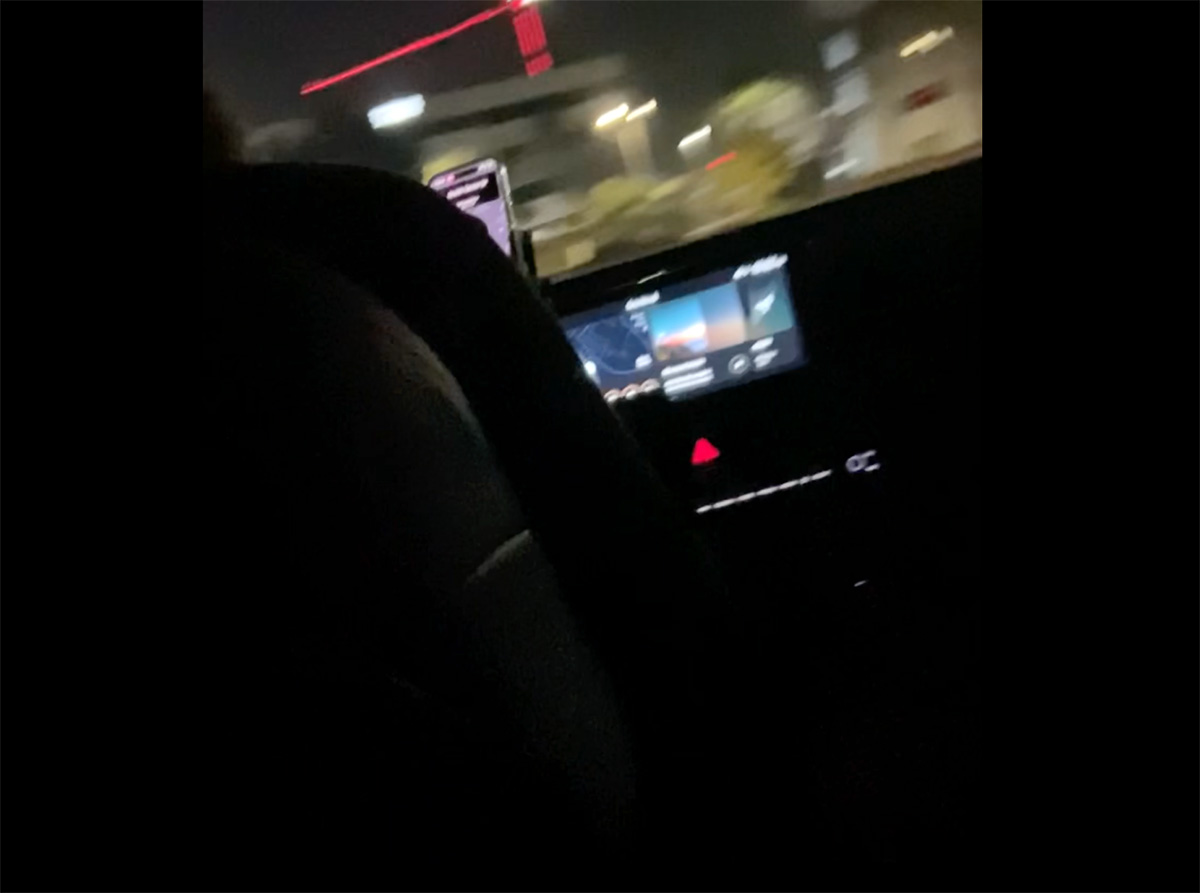
Note: The couple’s names have been kept anonymous by their attorney to avoid retaliation from Uber. They will be referred to as “J.” and “D.”
On Saturday, Nov. 8th, J. and D. shared a kiss during their Uber ride in San Diego’s queer-friendly North Park neighborhood when, suddenly, their driver pulled off the freeway. When the couple alerted him that he had taken the wrong exit, the driver said he would be letting them out because he did not “support [their] kind,” according to J.
It was at this point that J. began to record the interaction. In a 21-second clip provided to the Blade, J. and D. can be heard questioning the driver why they are being told to leave the vehicle when they had not yet arrived at their destination. Stranded in unfamiliar surroundings late at night, the couple responded in shock when the driver replied: “Because I don’t support you.”
In the video, J. asked explicitly: “You don’t support gay people?” to which the driver said: “No.”
J. and D. allege that after pulling over, the driver stepped out, retrieved a bat from his trunk, and cocked it back as if to strike them. At this point, the couple bolted, frantically running while dialing for the police. They ducked behind cars, panicking and hiding while waiting for officers to arrive. “I haven’t experienced another time in my life where I would say that I really was in fear of dying,” D. told the Blade. “We were just hiding there, hoping that we were going to survive at that point.”
Since then, the couple has sought out Los Angeles attorney Brian Breiter to represent them in a civil claim against the driver and Uber. Breiter explains that he is in the process of drafting the lawsuit, which includes claims of intentional infliction of emotional distress and civil assault against the driver as well as claims of negligent hiring, screening and training against Uber.
Breiter told the Blade that since his office sent a representation letter to Uber, there has been minimal contact from the company — no concessions, apology or accountability.
But, a spokesperson claims they have taken one concrete action in the case.
“Everyone deserves to feel safe, welcome, and respected when using Uber. Hate has no place in our society, and we do not tolerate any form of discrimination on the Uber platform,” an Uber spokesperson wrote to the Blade. “As soon as this was reported to us, we banned the driver from the platform.”
While this bit of news has been “relieving” for J. and D., it does not necessarily signal Uber’s readiness to improve their hiring, screening or training guidelines to protect their LGBTQ+ riders. “Removing this one driver does not prevent this from happening again,” Breiter told the Blade. “Unless Uber implements meaningful safety measures and proper screening, LGBTQ+ passengers and the public at large remain at risk.”
In October 2023, Uber Mexico created an LGBTQ+ mobile training initiative to strengthen their non-discrimination policy — but it remains unclear whether this training has been implemented more widely throughout the platform.
LGBTQ+ safety on these rides continues to be an understated issue, and J. and D.’s stories are not singular. On online forums, queer people have long shared their experiences with harassment and discrimination based on their gender and sexual identities. They take to the internet to warn others, understanding that: when there is no systemic change, they must rely on one another to be heard and to protect their communities.
Today, J. and D. do not feel safe using Uber or other rideshare apps. They are constantly reassessing and second-guessting their behaviors in public, for fear of violence. “We’re both very traumatized over this incident. [Recently] we went to dinner and we didn’t want to hold hands in public,” said J. “Because when we did kiss in the Uber, this man hate-crimed us and chased us down the street…It has just been really overwhelming and emotionally and physically draining.”
Kristie Song is a California Local News Fellow placed with the Los Angeles Blade. The California Local News Fellowship is a state-funded initiative to support and strengthen local news reporting. Learn more about it at fellowships.journalism.berkeley.edu/cafellows.
National
Serving America, facing expulsion: Fight for trans inclusion continues on Veterans Day
Advocates sue to reverse Trump ban while service members cope with new struggles
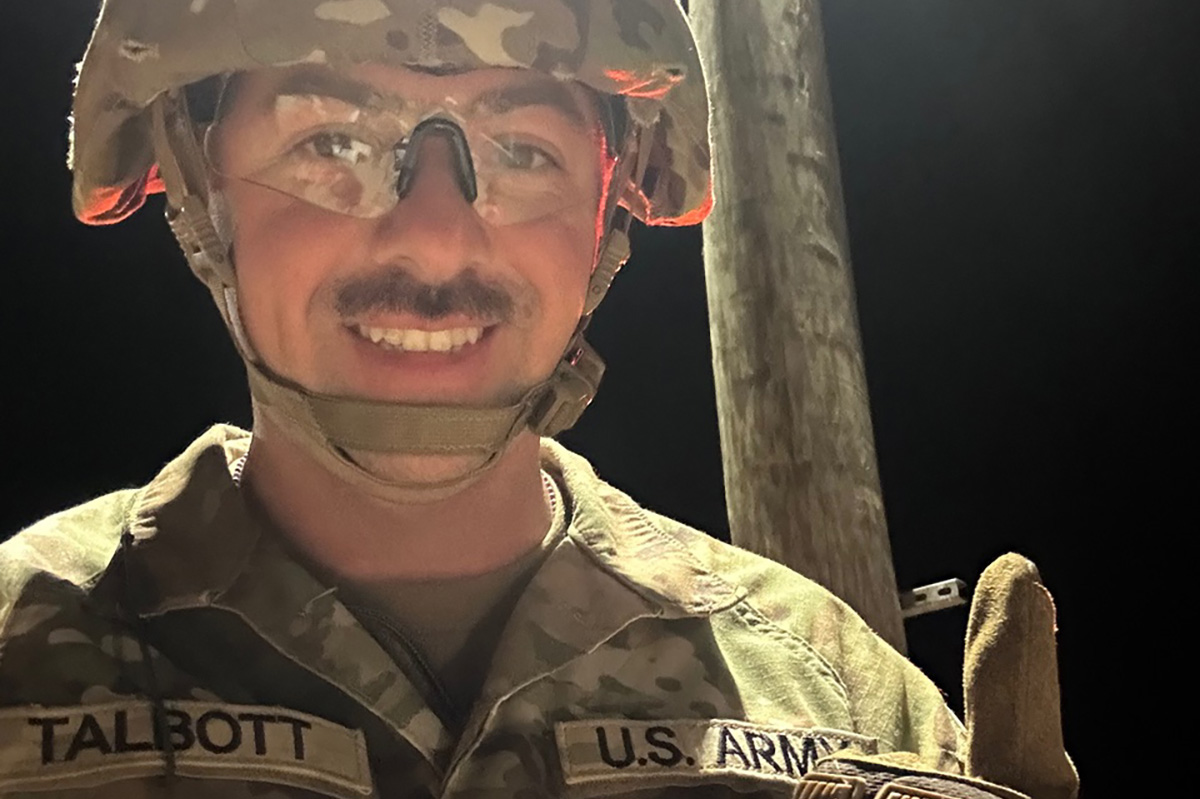
President Trump signed EO 14183, titled “Prioritizing Military Excellence and Readiness,” on Jan. 27, directing the Department of Defense (DoD) to adopt policies that would prohibit transgender, nonbinary, and gender-nonconforming people from serving in the military.
The Trump-Vance administration’s policy shift redefines the qualifications for military service, asserting that transgender people are inherently incapable of meeting the military’s “high standards of readiness, lethality, cohesion, honesty, humility, uniformity, and integrity,” citing a history or signs of gender dysphoria. According to the DoD, this creates “medical, surgical, and mental health constraints on [an] individual.” Regardless of their physical or intellectual capabilities, transgender applicants are now considered less qualified than their cisgender peers.
On Jan. 28, 2025, GLBTQ Legal Advocates and Defenders (GLAD) Law and the National Center for LGBTQ Rights (NCLR) filed Talbott v. Trump, a federal lawsuit in the U.S. District Court for the District of Columbia challenging the executive order. Originally filed on equal protection grounds on behalf of six active service members and two individuals seeking enlistment, the case has since grown to include 12 additional plaintiffs.
The Blade spoke exclusively with Second Lt. Nicolas (Nic) Talbott, U.S. Army, a plaintiff in the case, and with Jennifer Levi, Senior Director of Transgender and Queer Rights at GLAD Law, who is leading the litigation.
For Talbott, serving in the military has been a lifelong aspiration, one he pursued despite the barriers posed by discriminatory policies.
“Being transgender posed quite the obstacle to me achieving that dream,” Talbott told the Blade. “Not because it [being trans] had any bearing on my ability to become a soldier and meet the requirements of a United States soldier, but simply because of the policy changes that we’ve been facing as transgender service members throughout the course of the past decade… My being transgender had nothing to do with anything that I was doing as a soldier.”
This drive was fueled by early life experiences, including the impact of the Sept. 11 terrorist attacks, which shaped his desire to protect his country.
“Even for an eight-year-old kid, [9/11] has a tremendous amount of impact… I remember thinking, you know, this is a terrible thing. Me, and when I grow up, I want to make sure nothing like this ever happens again,” he said. “I’ve still tried to gear my life in a way that I can be preparing myself to eventually help accomplish that mission of keeping America safe from anything like that ever happening again.”
The attacks inspired countless Americans to enlist; according to the New York City government, 181,510 joined active duty and 72,908 enlisted in the reserves in the year following 9/11. Although Talbott was too young to serve at the time, the events deeply influenced his educational and career path.
“For me, [9/11] just kind of helped shape my future and set me on the path that I’m currently on today,” he added. “It ignited my passion for the field, and it’s something that you know, I’ve carried with me into my adult life, into my professional life, and that I hope to have a career in the future.”
Talbott holds a master’s degree in criminology with a focus on counterterrorism and global security, and while completing his degree, he gained practical experience working with the Transportation Security Administration.
Despite the public scrutiny surrounding the lawsuit and the ongoing uncertainty of his military future, Talbott remains grounded in the values that define military service.
“Being so public about my involvement with this lawsuit grants me the very unique opportunity to continue to exemplify those values,” Talbott said. “I’m in a very privileged spot where I can speak relatively openly about this experience and what I’m doing. It’s very empowering to be able to stand up, not only for myself, but for the other transgender service members out there who have done nothing but serve with honor and dignity and bravery.”
The ban has created significant uncertainty for transgender service members, who now face the possibility of separation solely because of their gender identity.
“With this ban… we are all [trans military members] on track to be separated from the military. So it’s such a great deal of uncertainty… I’m stuck waiting, not knowing what tomorrow might bring. I could receive a phone call any day stating that the separation process has been initiated.”
While the Department of Defense specifies that most service members will receive an honorable discharge, the policy allows for a lower characterization if a review deems it warranted. Compensation and benefits differ depending on whether service members opt for voluntary or involuntary separation. Voluntary separation comes with full separation pay and no obligation to repay bonuses, while involuntary separation carries lower pay, potential repayment of bonuses, and uncertain success in discharge review processes.
Healthcare coverage through TRICARE continues for 180 days post-discharge, but reduced benefits, including VA eligibility, remain a concern. Those with 18–20 years of service may qualify for early retirement, though even this is not guaranteed under the policy.
Talbott emphasized the personal and professional toll of the ban, reflecting on the fairness and capability of transgender service members.
“Quite frankly, the evidence that we have at hand points in the complete opposite direction… there are no documented cases that I’m aware of of a transgender person having a negative impact on unit cohesion simply by being transgender… Being transgender is just another one of those walks of life.”
“When we’re losing thousands of those qualified, experienced individuals… those are seats that are not just going to be able to be filled by anybody … military training that’s not going to be able to be replaced for years and years to come.”
Talbott also highlighted the unique discipline, dedication, and value of diversity that transgender service members bring—especially in identifying problems and finding solutions, regardless of what others think or say. That, he explained, was part of his journey of self-discovery and a key reason he wants to continue serving despite harsh words of disapproval from the men leading the executive branch.
“Being transgender is not some sad thing that people go through… This is something that has taken years and years and years of dedication and discipline and research and ups and downs to get to the point where I am today… my ability to transition was essential to getting me to that point where I am today.”
He sees that as an asset rather than a liability. By having a more diverse, well-rounded group of people, the military can view challenges from perspectives that would otherwise be overlooked. That ability to look at things in a fresh way, he explained, can transform a good service member into a great one.
“I think the more diverse our military is, the stronger our military is… We need people from all different experiences and all different perspectives, because somebody is going to see that challenge or that problem in a way that I would never even think of… and that is what we need more of in the U.S. military.”
Beyond operational effectiveness, Talbott emphasized the social impact of visibility and leadership within the ranks. Fellow soldiers often approached him for guidance, seeing him as a trusted resource because of his transgender status.
“I can think of several instances in which I have been approached by fellow soldiers… I feel like you are a person I can come to if I have a problem with X, Y or Z… some people take my transgender status and designate me as a safe person, so to speak.”
With the arrival of Veterans Day, the Blade asked what he wishes the public knew about the sacrifices of transgender service members. His answer was modest.
“Every person who puts on the uniform is expected to make a tremendous amount of sacrifice,” Talbott said. “Who I am under this uniform should have no bearing on that… We shouldn’t be picking and choosing which veterans are worthy of our thanks on that day.”
Jennifer Levi, GLAD Law’s Senior Director of Transgender and Queer Rights, also spoke with the Blade and outlined the legal and human consequences of the ban. This is not Levi’s first time challenging the executive branch on transgender rights; she led the legal fight against the first Trump administration’s military ban in both Doe v. Trump and Stockman v. Trump.
Levi characterized the policy as overtly cruel and legally indefensible.
“This policy and its rollout is even more cruel than the first in a number of ways,” Levi explained. “For one, the policy itself says that transgender people are dishonest, untrustworthy and undisciplined, which is deeply offensive and degrading and demeaning.”
She highlighted procedural abuses and punitive measures embedded in the policy compared to the 2017 ban.
“In the first round the military allowed transgender people to continue to serve… In this round the military policy purge seeks to purge every transgender person from military service, and it also proposes to do it in a very cruel and brutal way, which is to put people through a process… traditionally reserved for kicking people out of the military who engaged in misconduct.”
Levi cited multiple examples of discrimination, including the revocation of authorized retirements and administrative barriers to hearings.
She also explained that the administration’s cost argument is flawed, as removing and replacing transgender service members is more expensive than retaining them.
“There’s no legitimate justification relating to cost… it is far more expensive to both purge the military of people who are serving and also to replace people… than to provide the minuscule amount of costs for medications other service members routinely get.”
On legal grounds, Levi noted the ban violates the Equal Protection Clause.
“The Equal Protection Clause prevents laws that are intended to harm a group of people… The doctrine is rooted in animus, which means a bare desire to harm a group is not even a legitimate governmental justification.”
When asked what she wishes people knew about Talbott and other targeted transgender military members, Levi emphasized their extraordinary service.
“The plaintiffs that I represent are extraordinary… They have 260 years of committed service to this country… I have confidence that ultimately, this baseless ban should not be able to legally survive.”
Other organizations have weighed in on Talbott v. Trump and similar lawsuits targeting transgender service members.
Human Rights Campaign Foundation President Kelley Robinson criticized the ban’s impact on military readiness and highlighted the counterintuitive nature of removing some of the country’s most qualified service members.
“Transgender servicemembers serve their country valiantly, with the same commitment, the same adherence to military standards and the same love of country as any of their counterparts,” Robinson said. “This ban by the Trump administration, which has already stripped transgender servicemembers of their jobs, is cruel, unpatriotic, and compromises the unity and quality of our armed forces.”
Lambda Legal Senior Counsel Sasha Buchert echoed the legal and moral imperative to reverse the policy.
“Every day this discriminatory ban remains in effect, qualified patriots face the threat of being kicked out of the military,” she said. “The evidence is overwhelming that this policy is driven by animus rather than military necessity… We are confident the court will see through this discriminatory ban and restore the injunction that should never have been lifted.”
U.S. Supreme Court
Supreme Court rejects Kim Davis’s effort to overturn landmark marriage ruling
Justices declined to revisit the Obergefell decision
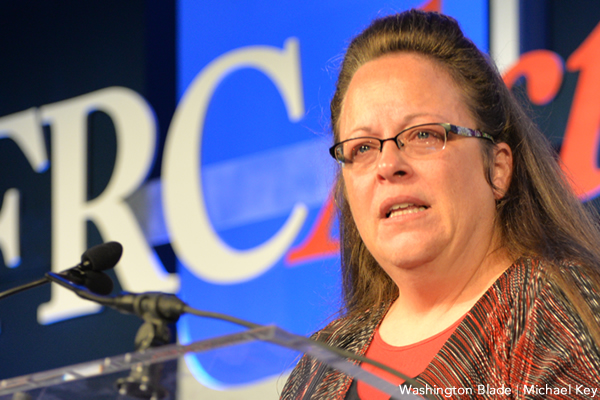
The U.S. Supreme Court has declined to hear an appeal from Kim Davis, the former Rowan County, Ky., clerk best known for refusing to issue marriage licenses to same-sex couples after the landmark 2015 Obergefell v. Hodges decision legalized same-sex marriage nationwide.
Following the Obergefell ruling, Davis stopped issuing marriage licenses altogether and has since filed multiple appeals seeking to challenge same-sex marriage protections. The court once again rejected her efforts on Monday.
In this latest appeal, Davis sought to overturn a $100,000 monetary award she was ordered to pay to David Moore and David Ermold, a same-sex couple to whom she denied a marriage license. Her petition also urged the court to use the case as a vehicle to revisit the constitutional right to same-sex marriage.
The petition, along with the couple’s brief in opposition, was submitted to the Supreme Court on Oct. 22 and considered during the justices’ private conference on Nov. 7. Davis needed at least four votes for the court to take up her case, but Monday’s order shows she fell short.
Cathy Renna, the director of communications for the National LGBTQ Task Force, a non-profit organization that works towards supporting the LGBQ community through grassroots organizing told the Los Angeles Blade:
“Today’s decision is not surprising given the longshot status of Davis’s claim, but it’s a relief that the Supreme Court will not hear it, given the current make up of the court itself. We hope that this settles the matter and marriage equality remains the law of the land for same-sex couples.”
Human Rights Campaign President Kelley Robinson released the following statement:
“Today, love won again. When public officials take an oath to serve their communities, that promise extends to everyone — including LGBTQ+ people. The Supreme Court made clear today that refusing to respect the constitutional rights of others does not come without consequences.
Thanks to the hard work of HRC and so many, marriage equality remains the law of the land through Obergefell v. Hodges and the Respect for Marriage Act. Even so, we must remain vigilant.
It’s no secret that there are many in power right now working to undermine our freedoms — including marriage equality — and attack the dignity of our community any chance they get. Last week, voters rejected the politics of fear, division, and hate, and chose leaders who believe in fairness, freedom, and the future. In race after race, the American people rejected anti-transgender attacks and made history electing pro-equality candidates up and down the ballot.
And from California to Virginia to New Jersey to New York City, LGBTQ+ voters and Equality Voters made the winning difference. We will never relent and will not stop fighting until all of us are free.”
This story is developing and will be updated as more information becomes available.
-

 Minnesota2 days ago
Minnesota2 days agoReports say woman killed by ICE was part of LGBTQ community
-
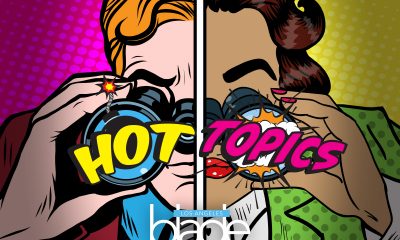
 Commentary2 days ago
Commentary2 days agoRepeal now, regret later: Section 230 is up for elimination, and it’s not the platforms who will pay the price
-
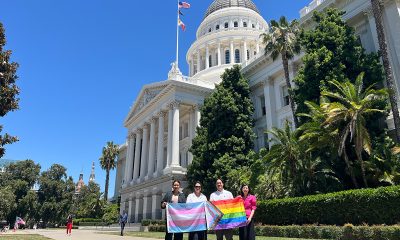
 Features3 days ago
Features3 days ago“We deserve to have a future here”: How we can support queer AAPI communities in 2026
-
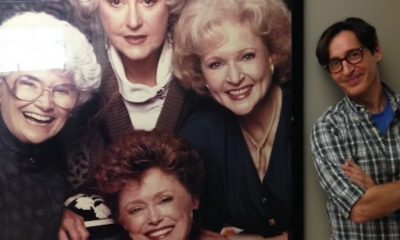
 a&e features2 days ago
a&e features2 days ago‘The Golden Girls’ writer Stan Zimmerman reflects on 40th anniversary, coming out, and working with Roseanne Barr
-

 Events4 days ago
Events4 days agoGlowing tigers and butterflies will light up LA Pride’s first event this year at L.A. Zoo
-
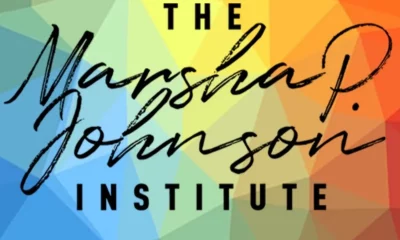
 LGBTQ Non-Profit Organizations3 days ago
LGBTQ Non-Profit Organizations3 days agoPassing the brick: How MPJI is centering Black and Brown trans voices
-

 Viewpoint4 days ago
Viewpoint4 days agoFrom closeted kid to LGBTQ+ journalist: queer community is my guiding light
-

 Movies3 days ago
Movies3 days agoTig Notaro & Zack Snyder’s hot lesbian action film
-

 Colombia3 days ago
Colombia3 days agoGay Venezuelan man who fled to Colombia uncertain about homeland’s future
-

 Movies2 days ago
Movies2 days ago‘Hedda’ brings queer visibility to Golden Globes
